|
10/3/2022 We Need to Elect More Leaders From the Labor Movement Into Government By: Tom ConwayRead NowWhen a group of custodians in York County, South Carolina, learned their bosses planned to sell them out to save a few pennies, they knew exactly who to turn to for help—a fellow worker who’d walked in the very same shoes. County Councilman William “Bump” Roddey, a longtime member of the United Steelworkers (USW) and a former custodian himself, assured the county workers that he had their backs. Roddey ultimately helped quash the scheme to contract out the county’s janitorial services, a victory both for the custodians and the taxpayers relying on their quality work. Electing more union members like Roddey to councils and mayoral posts will help to combat right-wing attacks on workers and hold local government accountable to the ordinary people it’s intended to serve. “We speak for the American worker,” Roddey, a member of USW Local 1924 who works at New-Indy Containerboard, said of union members. “We speak for the middle class. The agenda is not about us if we are not at the table.” If the county had privatized cleaning services, any small budgetary savings would have paled next to the pain inflicted on the custodians, Roddey said, noting officials out of touch with working people “don’t too quickly grasp these scenarios.” “The perspective of the people who sign the front of the paycheck is different from the perspective of the people who sign the back of the paycheck,” said Roddey, whose colleagues on the council include three business owners. “I bring that back-of-the-paycheck perspective to everything I do.” Attacks on working people aren’t unique to South Carolina. After the school board in Putnam, Connecticut, contracted out custodial services, for example, workers lost access to their pension system even though they’d been promised no change in benefits. In recent months, USW-represented school bus drivers in Bay City, Michigan, beat back efforts to contract out their work, while union members in Los Angeles County, California, won their own fight against privatization. Electing more union members would ensure that local officials instead invest their energies in productive ways, such as building robust, worker-centered economies. Some forward-thinking local officials have used their authority to pass worker protection laws, to establish agencies for enforcing those safeguards, and to create workers councils to take testimony on job-related issues, noted the Economic Policy Institute (EPI), a Washington, D.C.-based think tank, in a recent report. At Seattle’s Office of Labor Standards, for example, a full-time equivalent staff of 34 enforces 18 worker-centered ordinances, including those requiring paid sick time, employment opportunity, and protections for gig workers. Local officials have the power to hold corporations accountable when they accept public subsidies with promises of creating dignified, family-sustaining jobs. It’s also the prerogative of mayors and councils to provide resources, like affordable housing, that help level the playing field for struggling workers. And the advocacy of local officials can buoy workers in difficult times. Roddey and other leaders stepped up to support workers at Giti Tire in Chester County, South Carolina, during a USW organizing drive sparked by low pay, unsafe working conditions, and discrimination. “I certainly recognize the challenges that workers are facing every day at Giti,” said Roddey, part of a community coalition that signed a letter to corporate management in November 2021 demanding an end to its abusive practices. Having union members in charge at city hall not only protects jobs but may even help to ensure the survival of the community itself. Clairton, Pennsylvania, Mayor Richard Lattanzi points out that no one can adequately represent his city without a deep appreciation for the Clairton Coke Works and the Steelworkers who have anchored the community for decades. And while meeting the daily needs of his constituents, many of them USW members and other union workers, Lattanzi also must defend the coke works against extremists eager to shut it down. “That’s one-third of our tax base, and that’s our identity,” said Lattanzi, a longtime USW member who worked at the Irvin Works in the nearby community of West Mifflin. Some union members run for local office because their concern for coworkers spills over into the communities they call home. “Our job as a union and as union leaders is to take care of people, especially working people, and that’s what our communities are made up of,” observed Steve Kramer, president of USW Local 9777 and a member of the Dyer, Indiana, Town Council, calling his step into government service “a natural and easy progression.” Union membership equips workers with the skills they need for public office. Union members understand the power of solidarity and diversity. They’re accustomed to having a voice and standing up for what’s right. “What better person to run for elected office than a union member? We’re problem-solvers,” said Kramer, who’s helped to ensure that Dyer buys American-made products, that town-funded projects support good jobs, and that government resources are equitably distributed across the community. “I wish more union members would step up and do it. I know we have talent out there,” he continued, noting that in addition to elected positions, communities need volunteers to serve on water, library, and many other boards. An influx of union members into councils and other local posts would also help pave the way to more worker representation at other levels of government. As these local officials move up to higher office, Roddey noted, state legislatures and Congress will become more responsive to the will of the people. “There’s a path to changing how these bodies operate, and the first step is getting involved locally,” he said. AuthorTom Conway is the international president of the United Steelworkers Union (USW). This article was produced by the Independent Media Institute. Archives October 2022
0 Comments
9/10/2022 Bringing Workers’ Rights Into a Constitution? An Innovative State Ballot Proposal Could Offer a New Path for Labor By: Tom ConwayRead Now Chris Frydenger’s young coworkers at the Mueller Company performed the same work and brought the same dedication to their jobs as he did, but the manufacturer’s two-tier wage system exploited newer hires by paying them thousands less each year. Outraged by the unfairness, Frydenger and the entire membership of United Steelworkers (USW) Local 7-838 in Decatur, Illinois, took a stand during contract negotiations a few years ago and not only beat back the inequitable pay system but also won younger members catch-up raises of more than 21 percent. That collective victory remains one of the proudest moments in Frydenger’s life. And now it’s fueling his fight to make worker power a constitutional right in his home state. A November 8 referendum will give Illinois voters the opportunity to enact a “Workers’ Rights Amendment” to the state constitution, enshrining in the state’s highest law Illinoisans’ freedom to join unions and bargain collectively for better lives while also barring future legislation that would erode worker strength. The ballot question passed the Legislature on a bipartisan basis last year, a sign of how much the measure reflects the people’s will. As they educate more voters about the referendum, Frydenger and other activists find almost unanimous support for a measure that would give workers greater control of their destinies, beyond the clutches of CEOs, pro-corporate politicians and other anti-labor forces. “I can’t imagine why anybody wouldn’t be in support of this,” said Frydenger, grievance chair and Rapid Response coordinator for Local 7-838, who’s canvassing neighborhoods, distributing leaflets and making phone calls to make sure workers know that their very futures are on the ballot this year. The Workers’ Rights Amendment would help future generations negotiate the family-supporting wages needed to sustain the middle class and the nation’s economy. It would safeguard Illinoisans’ right to a voice on the job, including the freedom to call out unsafe working conditions without fear of reprisal. And it would ensure workers can band together, as Frydenger and his colleagues did, to hold employers accountable. Frydenger recalled the local’s negotiating committee tossing a pile of worker surveys on the bargaining table—all demanding elimination of the two-tier wage system—and telling management there’s no way union members would ever vote for a contract that retained it. The constitutional amendment has deep emotional meaning to Frydenger, who observed that it would confer “sacred,” “fundamental” and “essential” status on workers’ rights at a time that more and more Americans view union membership as the path forward. “Every time I turn on the news, I see an Amazon location or another Starbucks store voting in a union,” he said, noting that a new Gallup poll released on August 30 showed that 71 percent of Americans support organized labor, the most since 1965. “I think the pandemic showed people that their employers didn’t care about them as much as they thought they did,” Frydenger said. “It’s up to us to secure our rights in the workplace.” Even in Illinois, a strong union state, workers must remain on guard against efforts to rig the scales against them. Just a few years ago, a pro-corporate, anti-union governor proposed so-called “right-to-work zones” where organized labor would have been forced to represent workers regardless of whether they actually joined unions, a scheme intended to divide workers and undermine their collective power. “In an era when corporate-bought politicians and lobbyists are doing everything in their power to undercut workers’ rights, this would really help us level the playing field,” explained Aaron Sutter, incoming vice president of USW Local 4294, which represents hundreds of members at Cerro Flow Products in Sauget, Illinois. Sutter, raised by a postal worker and a public school teacher, grew up knowing that union wages “kept my household running and fed me every night.” But not until he took a job at a nonunion package delivery company with abusive managers and shoddy equipment did he fully understand the role unions play in protecting workers and helping them obtain their fair share. He vowed never to work in a nonunion shop again. “We’re living at a time when a pizza party is the most appreciation you can get without collective bargaining,” observed Sutter, who’s going door to door to educate voters about the amendment. The referendum requires a supermajority of votes for passage, but that also means anti-union forces would face an uphill battle if they ever tried to alter or repeal it. An attempted rollback would almost certainly be doomed to fail, Sutter said, predicting voters will guard it as zealously as Social Security and Medicare. Cathaline Carter, a retired union schoolteacher and member of the Steelworkers Organization of Active Retirees in Chicago, feels strongly about the amendment because of what organized labor has done for generations of her family—and what it has the potential to do for generations more. Carter’s uncle, Robert Jenkins, left rural Mississippi in the 1940s with little more than the shirt on his back and found his way to Chicago, where he took a union job at Youngstown Sheet and Tube. He worked his way up to crane operator, earning good wages that enabled him to buy a house, start a family and break into the middle class. Union contracts also gave him the resources to help to relocate other family members, including Carter’s mother, to Chicago. Carter and other members of the extended family then followed in Jenkins’ footsteps, lifting themselves up with union work of their own and building on the progress he made. “It gave him status in life,” she said of Jenkins’ union job. “He had things that people are struggling to have now.” AuthorTom Conway is the international president of the United Steelworkers Union (USW). This article was produced by the Independent Media Institute. Archives September 2022 8/9/2022 Auto Workers Turn a Corner for Strike Pay and Democracy. By: Keith Brower Brown & Jane SlaughterRead NowDelegates on the convention floor gathered before a debate that increased strike pay. Although the ruling caucus managed to get the strike pay increase reversed the following day, this year's convention—unlike any UAW convention in recent memory—featured real debate and some wins for reformers. Photo: Vail Kohnert-Yount Reformers in the Auto Workers won day one strike pay at the union’s constitutional convention in Detroit last week. They also forced open debate on the top concession that has weakened the union in the last 15 years--tiered contracts that condemn newer workers to lower pay and benefits beside “legacy” workers doing the same job. This was the first UAW convention since a leadership corruption scandal erupted, reformers won a member referendum last fall to adopt one-member-one-vote for top officers, and the auto industry began a serious transition to electric vehicles. Held every four years, the meeting has usually been a stale coronation of leaders. A newly organized reform movement turned the convention into a rowdy debate that, for moments, even overruled the top union leaders. Again and again, members of the Unite All Workers for Democracy reform caucus (UAWD) and other delegates gathered the numbers to put their issues on the convention floor. (That is, in between endless speeches from politicians, glowing videos about top union officers, and other time-wasting snoozes.) After debate, the dissenters were often voted down by loyalists of the Administration Caucus (AC) that has commanded every top office in the union since the 1950s. But reformers found enough new allies to rack up some remarkable victories. Strike pay across the union will now start on the first day of a strike, instead of its eighth. This will make a huge difference in the ability of thousands of UAW members to start and sustain a strike. Jessie Kelly, a skilled moldmaker at GM near Detroit, has seen the low-paid and the higher-paid ends of the auto workforce. She was a temp for three years and said, “Strike pay on day one was one of the most important issues to me coming in. We have a lot of low- and bottom-tier members who live paycheck to paycheck. It’s hard as hell for them to go a week with no pay.” UAWD developed the day one strike pay resolution as a top priority, and the caucus passed it through locals representing more than 40 percent of the membership. Another part of the resolution included a strike pay raise from $275 to $400 a week, which top UAW officers chose to adopt before it hit the convention floor. In campaigns for the union’s top officers, individual donations will be capped at $2,000 from 2026 on. The constitution committee had proposed no maximum. This was a spontaneous effort from the floor that passed with about 70 percent. Supporters spoke to the need to check the financial sway of top officers and staff, whose salaries are often triple what members make. UAWD’s top priority was a constitutional amendment to block expansion of tiered contracts, and work towards ending tiers entirely. In a tiered contract, workers hired later do the same job as more senior workers at far lower pay and benefits. After hundreds of delegates supported bringing the amendment to the floor, it garnered nearly a third of the vote, much higher than dissidents’ numbers in the past. AC supporters argued that bargaining was the place to deal with tiers, and that while they too despised tiers, they needed flexibility to keep them to avoid other concessions, and longer-term organizing to cut tiers out. Predictably, the next day newspapers reported that delegates had declined to repudiate tiers, while voting in a 3 percent raise for top officers. Other key resolutions were forced to the floor for landmark debates. Yasin Mahdi, three months on strike at CNH Industrial, advanced a resolution from the floor to raise strike pay even more: “We need to come to bargaining with $500 a week, from day one, so they know we mean to stop the corporate fuckery.” The measure passed with a two-thirds majority before AC leaders organized to overturn it a day later. CIVILITY RESTOREDUAW conventions have been notable for their intolerance of dissent, even when the number of reformers was small. In 2018 and some prior conventions, loyalists handed out noisemakers to drown out speakers who dared to dissent. This year, whether due to the rising reform movement or because the union is under a federal monitorship, the tone was far more civil. Dissidents were rarely booed at the mic, and due process was largely followed. While frequent challenges and process points from delegates sometimes led to confusion and griping on the floor, they also showed a union convention that, for a few days, stepped beyond the top-down pageants of recent decades. Willie Holmes is supporting incumbent president Ray Curry for re-election, but he said, “This is the best convention we’ve had. All this debate, all this questioning the people up at the front, it’s holding them to the fire. It might seem raucous. That’s what convention is supposed to be. “Every time before, we’d show up and be told, here’s the slate. Then we’d wait around for three days for it to be over.” Holmes is local union president at a General Motors axle and engine parts plant in Grand Rapids, Michigan. During the union’s 2019 strike at GM, International officers ordered his local to return to work to fill a military order. Instead, Holmes and his local decided to stay out on strike. After proving their crucial point in the supply chain, the local ended tiers in their plant’s contract. CORRUPTION CREEPSA few days before the convention, the federal monitor overseeing the Auto Workers issued a report bemoaning union officers’ failure to cooperate with his investigations, or even to reply to his requests for information. The monitor has 19 investigations into corruption ongoing, on top of the 13 UAW officials already convicted and sent (briefly) to jail. With the important exception of the raise in strike pay, stonewalling also seemed to be the AC policy for the convention. No UAWD resolution or constitutional amendment was put on the official docket for discussion, despite their support from many locals. The proposal to end tiers was not even printed in the “Submitted Resolutions” booklet. It was as if the AC expected to replicate past conventions where it presided with impunity. Rebranding as the “Mass Caucus,” at least for now, the AC held daily meetings where leaders laid out the plans for the day. With future staff jobs and attention for their locals on the line, delegates were told to follow orders from the top in the name of “solidarity” and “respecting the union.” One reformer who attended described the caucus environment as a “captive audience meeting.” A troubling sign came with a change approved for the union’s Membership Advisory Committee on Ethics. This oversight group was created in 2021 by a random, jury-style selection of eight of the 120 members who applied. A convention majority decided that instead, the union’s regional directors will now select the members who oversee their ethics. Without further changes or pressure, the foxes’ pups might be the ones to guard the coop. REFORMERS GET ORGANIZEDUAWD is a reform caucus allying members from the union’s traditional blue-collar base in manufacturing with the higher education and legal workers who now make up a quarter of the 400,000-member union. Younger members’ tech savvy was on full display in the use of Whatsapp updates and chats, with delegates, alternates, and others able to discuss in real time next steps on the floor. The caucus was founded just before the pandemic to fight to replace convention-based elections with one-member-one-vote, and it gained new traction when the federal government put the UAW under the monitor. With UAWD as the main organizers of a “yes” campaign for one-member-one-vote, last November members voted by almost two-thirds to adopt the new system, and for the first time this fall, officer candidates will have to face the membership. Shunte Sanders-Beasley, vice president of a Detroit-area Stellantis local, said her plant went 89 percent for one-member-one-vote last fall and that “because of the things that happened over the last 40 years, there’s no connection between the administration and the rank and file. It’s been a dictatorship. Members want to feel that they’re involved.” Perhaps reflecting that disconnect, turnout for the referendum was low. UAWD members—many of them new to union politics—have spent this year organizing their local members to pass convention resolutions and elect delegates on the platform “No Tiers, No Corruption, No Concessions.” They are backing a slate called UAW Members United: Shawn Fain, a dissident international representative for president; Margaret Mock, a former local shop chair, for secretary-treasurer; and Lashawn English, a three-term local president, for director of Region 1, one of three regions in Michigan. Both Fain and English fought imposition of the dreaded 3/2/120 work schedule in their plants. At a gathering for the slate held in a nearby bar Monday night, Fain referred to contract concessions the union made in 2009 when Chrysler and GM were in danger of bankruptcy and said, “Those [concessions] are still there, even though the companies are making money hand over fist… We have to set a standard that will make people want to be part of this union.” Mock mock-apologized for not handing out backpacks with her name on them, a reference to a recent scandal by her incumbent opponent giving out goodies for self-promotion. Bob Bickerstaff, a 39-year member and president of a Toledo Stellantis (formerly Chrysler) local, thought one-member-one-vote had opened a new day. “It should have been like this all along,” he said. “We can’t grow the union without everybody having input to take on the companies.” At their morning meetings, UAWD members cheered wins on strike pay and the hard-won openness of debate. Caucus co-chair Scott Houldieson said, “We made history yesterday. We passed an amendment from the floor. As far as I know, that hasn’t happened since the early 1980s.” THE EMPIRE STRIKES BACKOn the convention’s final day, the Administration Caucus went on the attack. The daily opening prayer, by Herb Taylor from Local 31, sought to warn and divide reformers: “I have a message for the young people: Stop disrespecting this union.” The many older auto workers who had spoken for reform were apparently not worth mentioning. Some AC supporters broke from prayer to give a standing ovation. Next came a charade of kissing up. AC supporters spent practically an hour nominating a union trustee candidate over and over from the floor, gleefully defying a rule allowing only two speakers per candidate. To make up for lost time, a book of more than 20 resolutions from the leadership was then approved as a block, without debate. This included a resolution on electric vehicles (EVs) focused on backing politicians and tax rebates to steer this growing non-union sector into the UAW, with hardly a mention of organizing battery and assembly workers themselves. A UAWD resolution to drive worker-led organizing at EV plants never made the floor. Finally, hours before adjourning, when some delegates had already left for the airport, AC delegates moved to rescind the $500 strike pay resolution passed barely a day before. Since that idea had been submitted by a lowly striking worker on the floor, establishment allies claimed the move had paid insufficient respect to the “highly educated men and women” of the leadership and how they chose resolutions in advance. In the end, with debate cut off before any objections could be voiced, delegates voted 421-181 to lower strike pay from $500 back to $400 a week. For all the let-downs at the end, Kelly celebrated the convention’s big step forward: “I was at convention in 2018. After the convention, I came home and felt sick. That was what I’d been organizing under, spending all my free time to build up? “This year, there’s so much more debate. It’s more democratic. It’s beautiful to see. “I really believe our membership is so intelligent. We can get so organized when we need to. But that’s not how we were treated. Now, you see one day of this, you see how smart we are.” Keith Brower Brown is a member of UAW Local 2865 at the University of California and was a delegate to the convention. Jane Slaughter is a former editor of Labor Notes. AuthorKeith Brower Brown and Jane Slaughter This article was republished from Labor Notes. Archives August 2022 Applicants wait in line to enter an Amazon hiring event at a fulfillment center. A leaked memo has revealed the company's strategy to hire vulnerable people more susceptible to its anti-union message. Los solicitantes esperan en fila para ingresar a un evento de contratación de Amazon en un centro logístico. | Elaine Thompson / AP LOS ANGELES—Already known for spending millions on union-busting—with mixed success—the monster retailer and warehouse firm Amazon planned to go far beyond that to gear up against the Teamsters’ campaign to unionize it, especially in a key area, Southern California. Its target to exploit: “Vulnerable people.” In a memo leaked to Recode, Amazon honchos said it would hire students from poor households and people just let out of jail after finishing their sentences. The implication is they would be desperate for jobs and join Amazon. Unable to afford advancement through college, for example, they would be trapped into remaining at Amazon. The memo says that those “vulnerable adult workers would become pro-company speakers.” And for California the Amazon memo envisions a “school to warehouse pipeline”—their words—to funnel young L.A. high schoolers and community college grads into its monster facilities. Amazon also proposed eliminating its employment interviewers’ questions to job applicants about pot use. The racist implication is that minority youth using the drug would be even more vulnerable and prone to super exploitation. The memo also calls upon Amazon to launch a PR campaign designed to ingratiate itself with community groups. And Amazon would shine up its image by supporting organizations that campaign for social change, such as better schools and job opportunities for ex-inmates. It might even raise workers’ pay—to $18 an hour.
Amazon’s strategy doesn’t surprise Shane Gusman, the Teamsters Legislative Director for California, speaking for JC42, in a telephone interview with People’s World. The council’s unions represent workers at, among others, the nation’s busiest port, Los Angeles-Long Beach. Including the PR effort and “buying off community groups,” Gusman said the memo outlines “classic corporate strategy to find any way to get around unionization.” The council also covers the port of San Diego and, importantly, California’s “Inland Empire” of warehouses for storing goods delivered from the ports before transshipment eastwards via truck and train. Walmart, Gusman added, has done the same thing. “It would traipse community groups through the legislature” to testify to the company’s good works while low-balling its workers on pay, benefits, and working conditions, and fighting unionization. “We’ve seen it a thousand times,” said Gusman. And Amazon, like Walmart, “looks at the political climate and latches onto a do-gooder cause” to promote. “It’s totally outrageous.” In the Los Angeles area, dropping the pot questions would let Amazon hire formerly incarcerated people whose past records would otherwise keep them out of jobs. The pay and the pipeline from the high schools and community colleges would appeal to the 80% of L.A. United School District kids who live in families below the poverty line, the memo contends. Both groups called “vulnerable" The memo characterizes both groups as “vulnerable people” open to an Amazon message of immediate jobs. According to the Amazon plan, they then become company defenders against the union. The memo admitted Amazon began with two big disadvantages: Negative perceptions of its impact on communities and local businesses and its low pay. Though the memo did not say so, the negative impact resulted in civic defeats of Amazon warehouse construction projects not just in Southern California but in Colorado, New York City, and elsewhere. In those cases, unions, including the Teamsters on the West Coast and Colorado and the Retail, Wholesale and Department Store Union in New York, mobilized community and political support against the Amazon projects by pointing out how Amazon’s warehouses would disrupt neighborhoods, how its business tactics drive local firms broke, and its skimpy pay. Amazon also worried about the Teamsters’ size, 1.2 million members, and clout, the memo says. Its honchos drew up the document in spring 2021. In 2020, both Teamsters presidential hopefuls declared Amazon, owned by Jeff Bezos, one of the three richest people in the U.S., is an “existential threat” to the union’s core of truckers and warehouse workers. Amazon may face all it can handle as it takes on Joint Council 42. Council locals cover a lot of Amazon’s business area. The council’s locals not only cover Los Angeles-Long Beach, where many of its goods enter from China but workers in Inland Empire warehouses. In those, the goods—brought by rail or by port truckers—are stored before distribution. And for years, JC42 and Teamsters headquarters in Washington have run a multi-step campaign to unionize those thousands of L.A.-Long Beach port truckers and to successfully alert surrounding communities to the negative economic impact of Amazon’s warehouses. The first part of the L.A.-Long Beach drive was to campaign against pollution port trucking firms inflicted on working-class neighborhoods by forcing the truckers to idle, waiting hours on end, for freight. They got state and local environmental officials to crack down. The second part was to alert the truck drivers, and the public, to port truck companies’ exploitation of the drivers by misclassifying them as “independent contractors,” and forcing them to buy their own gas, tires, insurance, and supplies while denying them decent pay and the right to unionize. Truckers would often go home with paychecks counted in pennies. And while JC42 was busy organizing the port truckers and getting them onto informational picket lines—and occasional one-day strikes—the union and its allies went to court under California labor law, which is tougher on bosses than federal law, to win cases against the misclassification. Penalties included not just money but the right to organize. Gusman pointed out that Teamsters can also take on Amazon’s economic arguments that it would use to entice the “vulnerable people” to work in its warehouses. “There’s no reason why the formerly incarcerated can’t get a good union job” since union contracts often bar bosses’ questions about a worker’s past criminal offenses. Some also bar questions about pot use. Young people targeted “And the same thing with the young people” who can be attracted to high-paying union jobs, notably through building trades unions’ apprenticeships and training, he said. The Teamsters, a member of North America’s Building Trades Unions, run such apprenticeships. Amazon’s memo does not discuss its tactics against independent grassroots unions springing up around the U.S. to organize its warehouse workers.
The leaked memo isn’t the first time Amazon tried PR tactics and other dodges to defeat unions, adding to the firm’s “normal” hiring of union-busters and frequent labor law-breaking, documented in unfair labor practices charges filed with the National Labor Relations Board. Left Voice last year uncovered a prior Amazon memo recommending the company film and promote what it called an “inarticulate” Staten Island worker to downgrade the ALU. That boomeranged. The worker Amazon pilloried was Chris Smalls. Smalls, who is both very articulate and very organized, co-founded the Amazon Labor Union. It began after bosses illegally fired him in 2020 for leading a lunchtime walkout at JFK8. The workers protested Amazon’s refusal to protect them against the spreading coronavirus—or even tell them who got sick, so they could protect themselves by anti-virus tests. The end result, after two years: ALU’s win at JFK8, 2,654-2,331. AuthorMark Gruenberg is head of the Washington, D.C., bureau of People's World. He is also the editor of Press Associates Inc. (PAI), a union news service in Washington, D.C. that he has headed since 1999. Previously, he worked as Washington correspondent for the Ottaway News Service, as Port Jervis bureau chief for the Middletown, NY Times Herald Record, and as a researcher and writer for Congressional Quarterly. Mark obtained his BA in public policy from the University of Chicago and worked as the University of Chicago correspondent for the Chicago Daily News. This article was republished from People's World. Archives August 2022 7/30/2022 Children as young as 12 working in Hyundai-owned plant in Alabama. BY: Zackery CorleyRead NowIn this Jan. 27, 2011, file photo, a Hyundai Elantra, left, and Hyundai Sonatas move down the assembly line in the Hyundai manufacturing plant in Montgomery, Ala. The factory is supplied with parts from the Hyundai-owned SMART plant, a metal stamping facility where rampant exploitation of child labor has been exposed. | Mickey Welsh / Montgomery Advertiser via AP LUVERNE, Alabama—Children as young as 12 have been discovered working at a Hyundai-owned metal stamping plant in Alabama, and other workers at the factory estimate that as many as 50 underage people may have been employed at the facility. That according to a horrific exposé detailing the exploitation of child labor at a Hyundai subsidiary factory in the small Alabama town of Luverne published July 22 by Reuters. Investigating the disappearance of a child from a family of Guatemalan immigrants, the news agency discovered that this child, now 14, as well as her brothers, aged 12 and 15, had all worked at the SMART metal stamping plant in Luverne earlier in the year. The children were not attending school, spending their days instead working in the Hyundai-owned factory. This family’s experience is not an isolated case, however. Tabatha Moultry, another worker at the SMART plant, noted that the facility has a high turnover rate and that while she was employed there, she worked alongside a migrant girl who looked “11 or 12 years old.” When Moultry asked, the girl said she was 13. When outrage spilled out in the local news media after the revelations, the plant dismissed many underage workers who were on its staff. Both Hyundai and SMART deny accountability for the situation. The automobile giant claims it “does not tolerate illegal employment practices at any Hyundai entity.” SMART, in its statements, denies that it knowingly violated child labor laws and passes blame to the temp agencies it uses to find workers. SMART says it expects these agencies to “follow the law in recruiting, hiring, and placing workers on its premises.” The SMART plant in Luverne has been tagged with $48,000 in OSHA penalties since 2013. Notable among the inspections that produced these fines include amputation and crush hazards—dangerous enough even for trained adult workers, let alone children. SMART boasts that it has the capacity to supply the parts for up to 400,000 vehicles yearly. Pedro Tzi, the father of the three children profiled by Reuters, makes a living doing odd jobs in the construction and forestry industries. He previously worked at the SMART plant himself. Tzi expressed regret that his children had gone to work. He told Reuters that his family needed any income it could get of at the time. “All is over now,” he said. “The kids aren’t working, and in fall they will be in school.” The child labor practices at SMART came to light after Tzi’s daughter went missing. Another worker at the plant had tricked her into leaving with him, and both of them were intercepted in Athens, Ga. Tzi’s daughter told police officers on the scene that her kidnapper had been traveling looking for new work opportunities. The office Alabama Attorney General Steve Marshall refused to comment on whether or not they have taken any action, despite having been previously informed by the police force of the town of Enterprise, which does not have jurisdiction over Luverne. The Alabama Department of Labor, however, announced that it would be cooperating with the U.S. Department of Labor and other agencies to investigate the child labor abuse at the SMART plant. The public response has been swift and overwhelming. The horrid tale went viral online, with many labor commentators, academics, politicians, publications, and others denouncing the Hyundai parts supplier. Alabama talk radio show host Jacob Morrison, from The Valley Labor Report, who is also Secretary-Treasurer of the North Alabama Area Labor Council of the AFL-CIO, took a strong stand on the refusal to comment by the attorney general’s office. He posted a July 25 video titled “Alabama Attorney General Doesn’t Care About Child Labor in His State." “It took 82 minutes, less than two hours, for him [Marshall] to jump into action to ensure that the law will force children in Alabama to carry incest and rape pregnancies to term,” Morrison said, referring to Marshall’s quick action following the Supreme Court’s reversal of Roe v. Wade. “Yet after five months, almost half a year, [his office] did not have a position…[to]…tell the press on the issue of child labor in a plant with rampant safety issues to include amputation hazards.” Josh Moon, a columnist for the Alabama Political Reporter, tweeted, “This is the sort of crap that happens when your AG [Attorney General] is more concerned with self promotion, meaningless grandstanding, and staffing an insurrection than just doing the job.”
“The only thing that will stop the greed of capitalism is us. Child labor laws are union made. Our rights are never absolute. The Labor Movement—working people—fought and died for our rights. It’s our turn to fight. Organize now. Organize everywhere.” An activist with the Communist Party USA in Alabama, Kent T., told People’s World: “We must remember that they [SMART] dismissed these child workers only when the public discovered what was happening and were disgusted,” Pointing to the conditions of the poor and immigrants face in the U.S., he said, “The poverty that forced these children into the factory in the first place should not exist in the richest country on earth. However, the people have power, and every injustice can be overcome with organization and unity.” People’s World attempted to ascertain what staffing agencies are currently being used by the SMART plant, with a particular focus on those agencies already known to be utilized by other automotive parts suppliers in Alabama. Unfortunately, or fortunately depending on your perspective, we could not find any current listings from any such agencies connected to the Luverne SMART plant as of press time. AuthorZackery Corley is an activist in Alabama. This article was republished from Peoples World. Archives July 2022 Workers at two stores among the hundreds of Trader Joe’s locations nationwide are hoping to join a newly formed independent union. There was a big lie that modern corporations sold to American workers in the late 20th century and into the first decade of the 21st century: It was that profit-driven entities could make both employees and customers happy enough that no interventions like worker unions or strong federal regulations were needed. Modern companies like Apple, Google, Starbucks, and Trader Joe’s perpetrated this lie, obscuring their business practices with a veneer of progressive ideals and referring to staff with euphemistic titles like “partners,” “associates,” or “crew members.” Indeed, many workers employed within this slice of the American corporate world were often relatively content—until now. Alongside the recent pro-union activity at more than 150 Starbucks cafés across the United States is a newfound awareness among some workers at the Trader Joe’s grocery chain that a union may also be in their best interest. Unlike corporations like Starbucks or Amazon where attempts to unionize have a long history, Trader Joe’s workers have traditionally been content. In 2003, when tens of thousands of grocery store workers in Southern California—home of the original Trader Joe’s—went on strike for better working conditions and pay, Trader Joe’s workers, who were not unionized, sat out the labor strife. Indeed, before the pandemic, Trader Joe’s was considered one of the best retail workplaces in the U.S. The employee resource website Glassdoor gives the grocery chain high marks year after year, making Glassdoor’s annual Best Places to Work list for 2011-2013 and 2017-2022. One Trader Joe’s employee told Business Insider that the part of their job they enjoyed most was customer interaction: “As long as I make sure the customer is having a great time, and I’m emphasizing Trader Joe’s values, I can talk to people about whatever I want.” Workers also cited good hourly wages, health insurance benefits, and retirement benefits as reasons to love their employer. Why then, in 2022, are workers at a Trader Joe’s store in Hadley, Massachusetts, voting to join a newly formed independent union called Trader Joe’s United? And why are their colleagues at a store in Minneapolis looking to do the same? According to Sarah Beth Ryther, an employee of the aforementioned Minneapolis Trader Joe’s and an organizing member of Trader Joe’s United, the reputation that her employer enjoyed “was once well-deserved.” But, since the COVID-19 pandemic began, she explains that “there’s been an erosion of some of the benefits,” and “there’s been a kind of degradation in the situation in the workplace that has led some of us to understand and see that the [company’s] narrative no longer aligns with the truth.” Indeed, the company began cutting workers’ benefits years ago. In 2013, Trader Joe’s stopped offering health insurance plans to part-time employees. It did so based on the fact that workers could potentially obtain plans through the Affordable Care Act, cynically taking advantage of a government program aimed at helping the uninsured. Boasting about 530 stores in 43 states—more locations than Whole Foods—Trader Joe’s, like many grocery companies, has thrived during the COVID-19 pandemic, earning $16.5 billion in revenues in 2020. But instead of sharing some of that wealth with workers, the corporate chain continued slashing benefits. “Several years ago, the benefits were really good,” says Ryther, adding, “There was a 15 percent guaranteed retirement match.” But then in more recent years, she says that coverage was reduced to 10 percent. This past January, workers at the company discovered that their retirement match was further cut by half, to 5 percent. “As of right now,” says Ryther, “there is no guaranteed retirement contribution.” Wages are also a huge issue. “The pay structure is set up so that some folks who have worked for the company for several years make less than people who are hired now,” says Ryther. Ryther also takes issue with the fact that there is no job security at her workplace. “Trader Joe’s is an ‘at-will’ company, which means they can let folks go for no reason or small reasons.” Union membership can bring contracts that prevent workers from being fired without cause—a critical protection for those active in labor organizing. Rather unsurprisingly, Trader Joe’s reportedly began engaging in union-busting tactics as soon as it was clear that employees were agitating for better working conditions. Several workers at the Hadley store who wore Trader Joe’s United pins said they were retaliated against and sent home before their shifts were over, even though wearing pro-union insignia is protected by the National Labor Relations Board (NLRB). There was similar retaliation against workers at a Vermont store, with one worker even being fired. Employees filed a complaint to the NLRB and won. Ryther, like many young workers around the country who have no direct experience with unions, says it has been a journey for her and her colleagues; they have been working since February to educate themselves “about what unions are, what a union could mean for Trader Joe’s and for our daily work life.” When the Hadley store’s union election date was set for late July, a Trader Joe’s spokesperson named Nakia Rohde sent an email to workers saying, “We are happy the dates have been set. Trader Joe’s is a great place to work, and we look forward to our Crew Members having a chance to vote on keeping things as they are or being represented by this SEIU-backed group.” Ryther says she had never even heard of SEIU, the Service Employees International Union, a well-established and large union that happens to be a favorite target of right-wing media. Indeed, Trader Joe’s United is not affiliated with SEIU or any existing union. The company’s reference to SEIU was likely a sly bid to undermine the newly formed independent union. But, like many corporations whose progressive façade is crumbling in the eyes of their young workers, Trader Joe’s may well lose the battle over unions. One former worker at a Florida store, Noella Williams, who resigned in protest of numerous concerns, published a litany of complaints this past June, adding to the company’s eroding reputation and confirming the views of many disgruntled workers. For most of her fellow workers, “it’s a no-brainer” to unionize, says Ryther, who hopes her Minneapolis store colleagues will soon follow in the footsteps of their counterparts in Hadley, Massachusetts, with a union election date. “We are very, very, excited to be able to vote in this election,” she says. AuthorSonali Kolhatkar is the founder, host and executive producer of “Rising Up With Sonali,” a television and radio show that airs on Free Speech TV and Pacifica stations. She is a writing fellow for the Economy for All project at the Independent Media Institute. This article was produced by Economy for All, a project of the Independent Media Institute. Archives July 2022 It has become fashionable for Marxists today to accept whatever radical bourgeois academia crops up for analyzing different forms of 'oppression,' e.g., intersectionality, critical race theory, etc. As I have argued before, however, all of these deviations are antithetical to the essence of Marxism - the class struggle. Some Marxists theorists such as G. A. Cohen and the school of analytic Marxism would lean towards the view that the development of productive forces is the motor of change in societies (also known as “Technological Determinism ''). Although this view would similarly reject these new bourgeois inventions, it is still a deviation from the class struggle. In our age, the central theoretician for the Marxist theory of class struggle is Domenico Losurdo. While many Marxists have the tendency to conceptualize class struggle in its idealized and pure form (e.g., proletariat vs. bourgeoisie), Lusordo’s novel contribution lies in his more concrete understanding of class struggle involving many different contradictions (social conflicts) beside class proper. The contradictions Losurdo observed beside class proper are national oppression and patriarchal oppression. Losurdo believes that these contradictions are not incidentally related to class struggle, but rather their relationship to class struggle is as a species of class struggle. Losurdo explains that national oppression and patriarchal oppression both involve the contradiction between exploiters and exploited. National oppression tends to involve the oppressor nation exploiting the oppressed nation through colonization; the oppressed nation produces surplus goods expropriated by the oppressor nation. Patriarchal oppression tends to involve the dominant gender (man) exploiting the subordinate gender (women) by expropriating the surplus value of a woman’s domestic labor; such patriarchal oppression begins in the formation and perpetuation of the monogamous family in which the patriarch resembles the bourgeoisie and the mother (and her children) resemble the proletariat. Losurdo also discusses racial oppression, but in some contexts, he treats it as akin to national oppression and in other contexts he treats it as if it’s separate from national oppression. Lusordo’s genus-species model is that different forms of oppression that seem independent of class struggle are actually species of class struggle. Class struggle is the genus that includes various forms of oppression as species. Why? Because these species of class struggle involve the same kind of contradiction as class struggle: exploiters vs. exploited. Losurdo proceeds to provide textual and historical evidence to support his claim that his theory isn’t entirely novel, but rather his theory can be supported by the writings and actions of Marx and Engels. The suggestion is that Marx and Engels’ theory of class struggle is basically the same as Lusordo’s, but unlike Losurdo they never formulated the theory of class struggle. I won’t go into the details of Lusordo’s argument where he provides textual evidence to support his claim. Rather, I’ll proceed to outline a theory of class struggle based on Losurdo’s work. I’ll begin with Lusordo’s genus-species model of class struggle. While Lusordo’s model has strong merits, I want to add more to his model that I personally believe would improve it. In particular, while I agree with Losurdo that class contradictions like national oppression and patriarchal oppression are species of class struggle, I wish to add more. Each species of class struggle shouldn’t be understood in isolation from one another, but rather they bear multiple relations to one another. One of the relations is that one species of class struggle can generate another species of class struggle. Furthermore, a species of class struggle creates a system of oppression that maintains it. Lusordo’s implicit explanation seems to be that national oppression and patriarchal oppression are species of class struggle because they essentially have the same kind of contradiction as that of class struggle: exploiter vs. exploited. An exploiter expropriates goods with surplus value produced by the exploited. This pattern appears in both national oppression and patriarchal oppression. I believe Losurdo is essentially correct here, but I believe more needs to be added. Specifically, species of class struggle bear complex relationships with one another in which they’re interrelated. One relation that will be the focus of my essay is that one species of class struggle can generate another species of class struggle. Let’s consider patriarchal oppression first. Engels wrote a book Origin of the Family, Private Property, and State gives an account for how the patriarchal monogamous family emerged. To summarize Engels’s argument briefly (and crudely), Engels argues that the patriarchal monogamous family emerged due to the emergence of private property. A monogamous family functions as a social mechanism to pass on private property from one owner to a prospective owner through inheritance. This social mechanism privileged one gender (men) over another (women) by giving one gender property rights. This also subordinates women in the monogamous family to the patriarch because they depend on the patriarch’s property to live. Furthermore, women were used by their own family to marry the patriarch in order to acquire some property. Women are basically sold to patriarchs to engage in domestic labor for the patriarch. In exchange, a woman’s family receives some property from the patriarch and a woman is guaranteed a livelihood under the patriarch’s household. Marx and Engels consider patriarchal oppression to be the first instance of class struggle. Why? Because the monogamous family dispossesses women of property while establishing private property relations for the male patriarch. The male patriarch owns his property including the tools and instruments of domestic labor that a woman uses. A woman produces some surplus value over and above necessary value expropriated by the male patriarch. The practice of the male patriarch’s property passing on to his male heir rather than a non-male heir reproduces the patriarchal social relation in which a male patriarch owns the property and his female counterpart remains perpetually dispossessed. This not only instantiates an exploiter vs. exploited dynamic in which the exploiter subjugates the exploited in order to expropriate surplus value produced by the exploited, but it is the first kind of exploiter-exploited contradiction. Marx and Engels argue that this first kind of exploited vs. exploiter contradiction is a germ for ancient slavery. This first species of class struggle generated another species of class struggle: slavery. Ancient slavery inherits the exploiter vs. exploited dynamic from the patriarchal exploitation. Just as ancient slavey inherited the exploiter vs. exploited dynamic from patriarch exploitation, the same can be said for national oppression and racial oppression with regard to class struggle between social classes. The ruling class of the dominant nation wishes to expropriate more surplus value than they’re expropriating from laborers in their home country, so they use their exploited members of their nation to dominate other nations in order to expropriate more surplus value from newly subordinated nations. Such is the case for the relationship between the British Empire and Ireland. The British Empire, spearheaded by the aristocracy and bourgeoisie, used the English working class to subordinate the Irish people in order to expropriate their land and surplus value. Marx and Engels point out that this colonial relationship will continue as long as the English working class remain subordinated and manipulated by the English aristocracy and bourgeoisie. Notice that national oppression didn’t simply emerge independently of class struggle, but the mechanism of its emergence is class struggle. Since the English aristocracy and bourgeoisie already subordinate the English working class through class dominance, they are able to use this class dynamic to their advantage by expanding to Ireland in order to colonize it. The class contradiction in England generated another species of class contradiction, national oppression, which also inherited the exploiter vs. exploited dynamic from it. Racial oppression is roughly similar. Racial oppression emerged in the context of class struggle. How? For instance, the ruling class needed more labor in order to maintain and grow their newly found colonies in colonial America. But they don’t have enough supply of such labor in Europe. At most they can acquire more European indentured servants, but the supply of indentured servants isn’t in abundance. Their alternative is to find a supply of labor in the existing slave market in West Africa. They bought slaves as well as captured slaves from West Africa to bring an abundant supply of labor to their new colonies through the transatlantic slave trade. This new supply of slaves preserved and strengthened their colonies as well as their class dominance. This is literally an instance of class struggle that involves a contradiction between one social class (bourgeois slave owners) and another social class (slaves). But this particular class contradiction gave rise to racial oppression. Originally, racial oppression in colonial America (and eventually United States before the abolition of slavery) almost completely overlapped with class struggle between the slave owners and slaves. It developed in the context of class struggle between slave owners and slaves and it was used to maintain this class dynamic (e.g. lynching, slave patrols, banning literacy, torture, and so on). But racial oppression acquired some relative (not absolute) independence from class struggle proper. Even after slavery was abolished, racial oppression no longer functions to maintain slavery, but rather to maintain super-exploitation and underdevelopment of black laborers. The overall point is that racial oppression can’t be separated from class struggle because it exists due largely in part to one form of class struggle (e.g. early bourgeoisie who own colonial territory including plantations vs. indentured servants and other laborers) generating another form of class struggle (e.g. slave owners vs. slaves). So far I spoke about various forms of oppression: national oppression, patriarchal oppression, and racial oppression. I explained how they’re not only different species of class struggle, they either generate a new species of class struggle (e.g. patriarchal oppression generating ancient slavery) or they’re generated by a species of class struggle. But there are other forms of oppression that I haven’t discussed. For instance, what about oppression of LGBTQ+ people? How does their oppression involve the exploiter-exploited contradiction and how does this contradiction emerge in the context of class struggle? Before I answer these questions, I like to remind my readers that this essay puts forward a rough outline of the theory of class struggle rather than a mature and developed theory. One possible answer (known among Marxist theoreticians) is that the function of the oppression of LGBTQ+ is to maintain the patriarchal monogamous family which in turn has an importance under capitalism. While the patriarchal monogamous family goes all the way back to slavery, it eventually acquired a new role under capitalism. In particular, its role was to provide a supply of a reserve army of labor through reproduction. A woman’s role in the monogamous family was to provide reproductive and domestic labor rather than to sell her labor power in the market while a man’s role was to provide for the family by selling his labor power in the market for a wage that can sustain his family. The monogamous family under capitalism continued to delineate gender roles that had to be maintained to replenish and grow the reserve army of labor through reproduction. One of the way this is maintained is to oppress LGBTQ+ people in order to “keep them in line.” But as the productive forces become advanced and automated such that a supply of labor power isn’t a high demand like it once a generation ago, the traditional monogamous family is slowly becoming obsolete and LGBTQ+ are experiencing an unprecedented degree freedom (though they’re still very much oppressed in a variety of of ways). Again, this is just one possible answer. What about people with disabilities and elderly people? Again, like the previous oppression, there is no definitive answer to this yet, but one possible answer is that capitalism favors workers whose physical and mental labor power can produce or facilitate the production of commodities with embodied surplus value. The bourgeoisie has a standard of what constitutes a laborer being physically and mentally fit in order to buy mental & physical labor power the bourgeoisie consider to be reliable. This is not a perfect answer, but the purpose of this paper is to demonstrate the explanatory power of the theory of class struggle that I’m putting forward in this essay. These different forms of oppression emerged in the context of class struggle proper. They inherited the exploiter-exploited relationship from class struggle proper. In this respect, class struggle is fundamental to various forms of oppression that we normally don’t classify as class struggle due to the dominant liberal ideology. What is this dominant liberal ideology? It presents various forms of oppression as more or less independent lanes that incidentally intersect with one another and inadvertently treats class as one among many lanes which intersect with them. Class under this dominant liberal model has no special place. A Marxist should reject the dominant liberal ideology in favor of the theory of class struggle. Why? Because it provides a theoretical and ideological basis for class solidarity among workers. The dominant liberal ideology insinuates a pessimistic message that workers are in a perpetual antagonistic relationship with one another which can’t be resolved. But there is a potential for class solidarity among them because they all are exploited in a variety of ways throughout the complex history of class struggle. Many of the social divisions that exist among them can be ultimately traced back to the long history of class struggle that even precedes industrial capitalism. These social contradictions exist ultimately to maintain the class dominance of the exploiters…in particular the imperialistic bourgeoisie who own cartels as shareholders. The theory of class struggle I outlined so far is a rough outline. It is far from mature and well developed. I mostly wrote this essay as a starting point before it (hopefully) reaches the peak of its development and maturity. What prompted me to write this essay is that I realize many people who call themselves Marxists still underestimate the importance of class struggle in understanding various forms of oppression because of their implicit embrace of the dominant liberal ideology under the guise of social justice. So I thought it’s important to outline this theory to help my readers understand not only the importance, but also the theoretical and ideological necessity to displace liberalism with Marxism. AuthorPaul So is a graduate student who studies philosophy in a PhD program at University of California Santa Barbara. While Paul’s research interests mostly lie within the tradition of Analytic Philosophy (e.g. Philosophy of Mind and Meta-Ethics), he recently developed a strong passion in Marxism as his newfound research interest. He is particularly interested in dialectical materialism, historical materialism, and imperialism. Archives April 2022 Amazon Labor Union worker-organizers celebrated their 2,654-2,131 win today. Photo: AP Photo/Eduardo Munoz Alvarez It’s the magical stuff of Disney movies. But yesterday, the improbable became the most probable when the scrappy band of workers who make up the Amazon Labor Union took the lead in a union election at a warehouse in Staten Island, New York, putting within reach a historic labor win at the corporate behemoth. Before the vote count most reporters had dismissed the independent union’s chances, treating the organizing as a curiosity at best. “I think we have been overlooked,” said ALU Treasurer Madeline Wesley Thursday night. “And I think that that ends tomorrow when we are victorious.” The ALU clinched a decisive victory today, winning by a wide margin to create the first unionized workplace in Amazon’s extensive network of fulfillment, delivery, and sortation centers across the U.S. The company’s facilities are concentrated in metropolitan areas like New York, Chicago, and Los Angeles, opening a path for more organizing. The vote at the Staten Island warehouse was 2,654 in favor of forming a union to 2,131 against. There were 67 challenged ballots, and 17 voided; 8,325 workers were eligible to vote. “We want to thank Jeff Bezos for going to space, because while he was up there we were organizing a union,” said ALU President Chris Smalls after official results were announced. Another warehouse at the same complex on Staten Island, LDJ5, will begin a vote to unionize with the ALU on April 25. How We Did It MAPPED OUT THE LEADERSThursday night in Brooklyn, after the first six of the 10 boxes of ballots had been counted, workers were giddy with excitement and disbelief, dancing to hip-hop and laughing. “It seemed like a long shot,” said ALU Vice President Derrick Palmer outside the building in Bushwick, weighting each word for emphasis. “But we just went out there and did it—workers, unionizing the second-largest private employer in the country.” The more Palmer spoke about what exactly they had done to accomplish the impressive feat, the clearer it became that neither magic nor luck had anything to do with the union’s victory; it was hardscrabble worker-to-worker organizing that got the goods. Palmer has worked as a packer at Amazon’s sprawling warehouse complex for three years. He estimates that out of 100 people in his department, 70 percent were solid yes voters. “I pretty much flipped my whole department,” he said. “What I’ll do is study a group of friends and go to the leader of the pack. Whatever the leader says, the rest of the group is going to do.” Fellow ALU organizer Michael Aguilar agreed about the approach. For example, “Cassio [Mendoza] talks to all the Latino workers in the building,” he said. “I knew that we would win because of Maddie [Wesley],” Aguilar added. “She’s so empathetic, so she can connect with a lot of people in the building. She was one of the key leaders.” The independent union enlisted the support of volunteers from various unions and community groups to run a phone banking operation. Wesley tallied union support on the phones and in tabling outside the facility; it was during one such tabling that she recruited Aguilar to the organizing effort. “Our data had about 65 percent support, which obviously has some margin of error because the people who are most likely to talk to us are most likely to be supporters,” said Wesley. Most of the workers I spoke to didn’t use organizing lingo, but they had clearly mapped the warehouse. “We know in which departments, and on which shifts, we have strong support because of where our organizers are,” Wesley said. ALU member Justine Medina credited Communist organizer William Z. Foster’s Organizing Methods in the Steel Industry for the group’s organizational acumen and bottom-up organizing approach. She and others on the organizing committee read and discussed it, giving it out to workers to read. (See sidebar.) An Inside JobThe worker-led character of the organizing drive gave it credibility. When Amazon tried to portray the union as an outside “third party,” its highly paid consultants’ arguments would fall flat, because workers would take their questions to their ALU co-workers. Meetings in the break room were decisive, Palmer said: “I was organizing in the break room on my days off like 10 hours a day, giving out food, talking to workers, and giving out information.” Smalls said he urged co-workers, “Come have a conversation with me. Don’t just go off what you’re hearing from Amazon and the rumors.” But collective actions were crucial too. “We showed them that we’re fearless,” said Smalls. “We did rallies in front of the building. We showed them, better than we can talk about it.” Smalls led a walkout in March 2020 to protest the company's failure to keep workers safe from the pandemic. Amazon fired him afterwards, supposedly for violating Covid protocols. Vice reported that the company’s general counsel insulted Smalls in a meeting with top brass, calling him “not smart or articulate.” These remarks have elevated the charismatic Smalls as the face of the union drive. But asked about the media attention, he points to the collective struggle and emphasizes that the ALU operates on democratic principles, with all decisions voted on. “I’m just the interim president,” he said. “I’m temporary. It’s not my union; it’s the people’s union.” Plenty more WarehousesStanding outside in a drizzle of rain Thursday night, he lifted his hand and pointed towards the Brooklyn apartment they’ve turned into their homebase: “That’s all I had was 20 core committee members, and a workers’ committee of over 100 people. We started with about four.” Asked if ALU would consider affiliating with another union, he said, “I got to be with the people that was with me from day one. We want to stay independent, and it’s better that way. That’s how we got here.” But, he adds, “whatever anybody is doing against Amazon, shiiiit, they got my support! There’s plenty of [Amazon] buildings. Pick one!” He compared ALU’s culture to Money Heist, the Spanish Netflix series where a criminal mastermind known as “The Professor” brings a band of criminals together to take on the state and steal billions of euros from the Royal Mint. “Call me The Professor,” he jokes. Smalls went from hip-hop hopeful to labor leader. “Life is crazy,” he said. “That’s all I can say. Who would have thought?” AuthorLuis Feliz Leon is a staff writer and organizer with Labor Notes.[email protected] This article was republished from Labor Notes. Archives April 2022 4/1/2022 Alphabet Workers Union wins official recognition of first bargaining unit. By: Liberation StaffRead Now
Google Fiber workers in Kansas City, MO who voted to join Alphabet Workers Union. Credit — AWU
On March 25, Alphabet Workers Union (AWU) won its first legally-recognized bargaining unit of retail associates at Google Fiber stores in Kansas City, MO. The workers voted 9-1 to form a bargaining unit that will now negotiate a first union contract with BDS Connected Solutions, a contractor hired by Alphabet Inc.’s Google Fiber division to run its retail operations. Alphabet is the parent company of Google and other companies. Google founders Larry Page and Sergey Brin are each worth over $100 billion, making them two of the world’s richest individuals alongside other tech oligarchs like Bill Gates, Jeff Bezos, and Elon Musk.
Alphabet Workers Union, a member of Communications Workers of America (CWA), is a wall-to-wall union made up of workers across Google, other Alphabet companies, and various sub-contractors hired by Alphabet to perform certain functions. The union has over 900 members, and though the vast majority do not yet have collective bargaining agreements with their respective employers the workers have still fought for and won numerous improvements in their working conditions with collective action. The Google Fiber retail store associates are the first to run and win a union recognized by the National Labor Relations Board. BDS Connected Solutions is now required by law to bargain with these AWU workers collectively. This recognition will be a welcome change, as the company was aggressively anti-union during the leadup to the election. Eris Derickson, a member of the new bargaining unit, observed, “Our campaign faced many efforts to discourage us from exercising our right to a collective voice on the job.” BDS Connected Solutions even hired union-busting consultants who threatened employees with job loss and denigrated the workers’ union in leaked audio from a captive audience meeting.
The AWU workers, prepared for BDS’s own anti-union campaign, countered the consultants’ talking points and put management on the back foot. Importantly, workers pointed out who comprised their union at their stores: the workers themselves. It was not – as the consultants argued – a third-party looking to sow trouble and collect dues.
This is AWU’s first victory in a campaign for collective bargaining rights but not the first action by Alphabet workers. AWU grew out of a long history of tech workers organizing at the company. For a long time, Google maintained a reputation as a great place to work; it was known for its free food, progressive values, and famous “Don’t Be Evil” motto. In 2018, that motto was removed from its code of conduct, and cracks began to appear in the sunny Silicon Valley facade. That same year, employee revolt forced the company to not renew a contract with the Pentagon, named “Project Maven,” that had Google employees write software to analyze imagery from U.S. military drones. Later that year, worker organizers led a massive walkout over Google’s repeated failure to properly handle sexual harrassment against employees. The company had offered credibly-accused executives hefty payouts as they were asked to resign and reassigned abusive managers to protect them from consequences. Andy Rubin, the creator of the Android operating system, was gifted $90 million on his way out – even though Google’s own investigation found an allegation that he sexually assaulted an employee in 2013 to be credible. Although it claimed to be chastened and promised to listen to employee concerns, Alphabet retaliated against some of the walkout organizers the next year and later fired organizers who created a petition that called on Google to stop work for US Customs and Border Protection. Workers then began to look for other ways to protect their rights on the job. The organizers got into contact with CWA’s Campaign to Organize Digital Employees (CODE), which has become a driving force in tech worker organizing across the country. AWU formed secretly throughout 2020 and launched publicly in January 2021. Though they lack a bargaining agreement, the AWU workers have solidarity with one another. They have successfully won back an attendance bonus for datacenter workers, secured housing stipends for remote interns, and forced Alphabet to issue badges with employees’ chosen names. The rapidly growing tech sector has driven much of the economic recovery since the 2008 financial crisis. The workers who make that economic growth possible have increasingly become aware of their status as members of the working class and have banded together to prevent abuse by employers and to win a fair share of the fruits of their labor. Indicative of tech worker organizing growing in its strength, the New York Times Tech Guild – also organized with CODE-CWA – recently celebrated the creation of tech’s largest bargaining unit with 600 members. Tech workers are not just the stereotypical Bay Area computer programmers – many workers in different jobs and different firms around the world provide necessary labor needed to power a search engine, phone app, or online marketplace. These workers might maintain data centers worldwide, assemble smartphones in Asia, label data in Syrian refugee camps, or cook food for the software developers’ free meals in Silicon Valley. Most of these workers are not directly employed by the well-known tech giants. For example, the drivers of the ubiquitous blue Amazon delivery vans are not employed directly by Amazon but by hundreds of smaller “delivery service partner” firms. Alphabet takes advantage of this two-tier employment system to reap super-profits and maintain an almost $2 trillion market capitalization with only 150,000 full-time employees. This is deceptive: Google itself employs even more temps and contractors than full-time employees in order to manage its operations. This tiered employment system allows Alphabet to cut costs by devolving as much work as possible to cheaper contractors and subcontracted workers. These workers have fewer rights and are in a more unstable position than full-time Alphabet workers. The Google Fiber workers in Kansas City are exemplary of this “divide and conquer” staffing strategy. The victory of the Google Fiber workers at BDS Connected Solutions opens the door for these contracted workers to negotiate a collective bargaining agreement that narrows the gulf between them and workers directly employed by Alphabet. Meanwhile, AWU continues to fight for workers across the conglomerate and its subcontractors to end the two-tiered employment system, prevent illegal retaliation, and assure all workers dignity at work. AuthorLiberation Staff
This article was produced by Liberation News.
ArchivesApril 2022
The multi-billion dollar company waged a well-funded campaign against grassroots labor organizers, who, after a hard-fought struggle, successfully unionized a New York City warehouse
Amazon worker leaders celebrate their union victory outside the JFK8 warehouse (Photo via BreakThrough News)
On April 1, Amazon workers could be seen celebrating and embracing amongst shouts of “ALU!” in front of the JFK8 warehouse in Staten Island, New York City. These workers had just won the first union at Amazon in the US: the Amazon Labor Union (ALU).
The union has been fighting to organize workers in the Staten Island warehouse since April 2021. After a year battling vicious union-busting on the part of Amazon and gathering support of agitated workers, union organizers won their union election with a 2,654–2,131 vote. 67 ballots remain contested. The union organizers themselves are current or former Amazon workers. The nascent Amazon Labor Union, self-described as an “independent, democratic labor union”, is not formally part of any established union. However, established unions have provided ALU with significant support in the form of office space, lawyers, and advisors according to ALU’s website. ALU’s organizing efforts in Staten Island have been described as “unorthodox”, with a young, Black, Latino and working class union leadership that far better represents the demographics of actual Amazon workers than former CEO and executive chairman Jeff Bezos, one of the richest people in the world. In 2020, Amazon executives including Bezos attended a meeting in which Amazon General Counsel David Zapolsky described Black organizer Chris Smalls, then recently fired from the warehouse for staging a protest against Amazon’s lack of COVID-19 protections, as “not smart, or articulate”. Executives seemingly believed Smalls’ leadership would discredit worker organizing, to Amazon’s benefit. Instead, Smalls has led ALU’s successful organizing drive as its interim president.
The City reported the scene from the bus stop outside of the warehouse where ALU has dedicated much of its organizing efforts. There is a shrine to a warehouse worker killed by a driver when she was crossing the street during a midnight lunch break, a testament to Amazon’s precarious conditions. The bus stop is surrounded by evidence of Amazon’s notorious union-busting efforts: a barbed-wire topped fence that came up after Smalls’ protest against lack of COVID-19 protections, and scaffolding that obstructs the view of bus stop organizing from workers at the warehouse. ALU has decorated both of these obstructions with the union’s initials and ribbons.
In 2021, Amazon spent $4.2 million on union-busting consultants, hired to persuade workers to not join the union. ALU crushed Amazon’s union-busting efforts with less than $100,000 according to Chris Smalls, soliciting donations from a Gofundme page. Amazon forced workers into captive-audience meetings in which hired consultants called ALU organizers “thugs”. One of the union’s demands is that Amazon allow organizers into these meetings to tell workers their side of the story. As described in the union’s website, “when ALU president Chris Smalls came onsite to give out food and answer questions, General Manager Felipe Santos had him and two of our coworkers arrested by the police.” The ALU has a comprehensive list of demands of Amazon. These include a $30/hour minimum wage to account for New York City’s enormous living costs, a pension, childcare, a free shuttle to and from the warehouse, and a fair and transparent promotion system. One important demand is that Amazon “Shut the [warehouse] down with pay during extreme weather events”, especially important considering the six Amazon workers who died in a warehouse in Illinois after Amazon refused to shut down operations despite tornado warnings. The ALU allows for workers to vote and change demands consistently, adding further demands depending on worker feedback. The next step after winning this union election is for Amazon workers to fight for their first contract. After the worker’s victory, ALU president Chris Smalls said, “This is the catalyst for revolution.” AuthorNatalia Marques
This article was produced by Peoples Dispatch.
ArchivesMarch 2022 2/22/2022 Socialism in the Natural State: Newspapers of the socialists of Paragould. By: Arkansas WorkerRead NowIt’s hard to believe, but Arkansas at the turn of the 20th century was a hotbed for radical labor organizing and socialist thought. In this series – Socialism in the Natural State – we’ll be shining a light on this lesser-known side of Arkansas history.
The Call to ActionThe edition accessed at the state archives was Vol 1, Issue No. 4, published March 27, 1912. Here are a few transcribed articles: Workers: Unite and Vote the Socialist Ticket
As means to this end we advocate the following measures:
LANDLand is the chief source of production. From it we get our food, shelter and clothing; in fact, everything for use or convenience. Without land a man has no place to live or labor and becomes a wanderer in this world. Land, being a necessity to the individual and to society in general, it becomes a crime to let any man or set of men, own land or mineral resources for the purpose of robbing others in the form of rent, interest or profit. Socialism means to do away with the three means of exploiting. To do this we must have public ownership. Now the question arises: How can we get control of the land? Back in the early thirties when that noble band of agitators was teaching and urging the people to convert the private schools into free public schools, the same question was asked of them. The Socialist Party has never formulated any specific plan as yet, but as an individual I will express my ideas. To me there would be three ways: First, purchase; second, competition; third, confiscation. We, as a great nation, could pay for lands in a short time if the fictitious valuation is gotten rid of. Second: We still have sufficient public lands upon which to put the great army of the unemployed to work. That would make the privately owned lands less valuable. The private owners could not then get anyone to rent their lands if they (the workers) could, through co-operation, get the full product of their labor, therefore private land would soon be given over to the government for taxes. This would do away with the land speculator. The owner of a home and a small tract of land would continue to stay and use it. If he wanted to sell he could sell his improvements, but not the land. The improvements would be private property and would represent his individual labor and no one would have a right to it. But he did not create the land, so he has no right to hold it as his own. Third: Truthfully speaking there is no real title to land. It was first taken by might through war, then given to the ruler’s friends and pets, then to the land grafters, then to the individual. And, by right, all should be legally handled for having in their possession stolen property. America belonged to the Indians [unintelligible]. They did not record their deeds and titles, yet in a crude way they enjoyed the use of the lands as a whole, the proof of exploitation being so plain. I think the whole people are the rightful owners of all lands and must have their own. To take back what has been taken away from you is no harm. The writer has not been very explicit in this article. He leaves room for thought. Each individual must think for himself. Any further questions on this subject will be carefully answered if you will write to this paper asking the editor for the desired information. Greene County SocialistThe edition accessed at the state archives was Vol 1, Issue No. 45, published April 4, 1914.
Force Girls Into Vice Mr. Barrett made an investigation of Greek coffee houses in St. Louis. He questioned twenty-nine girls employed in these places and he reported several of the girls told him they got work in the coffee houses only on a promise to enter a life of immorality. The girls serve the coffee in the houses, he reported, and take their places at the table with the men as they drink their beverages. Intoxicants also are served in several of these coffee houses, he reported. Agents Get 50 Per Cent of Wages Many men out of work agree to pay employment agencies as high as 50 per cent of their wages, Barrett reported, and in many construction camps the foremen are in league with the employment agencies to discharge men after they have worked only a short time and thus make way for new men. The “fees” then are shared by the employment and the foreman. The men employed in the construction camps, he reported, are charged 25 cents a month for hospital fees but are discharged if they get sick. The food in the camps is unwholesome, the bunk cars are filthy, the cooks are often diseased and there is grave danger of epidemic in the camp, Mr. Barrett says. Laborers Ready to Revolt Mr. Barrett also studied the mental attitude of the casual worker. In this point he reports: “If this immense army of these down-and-outs could get together and stay in one place long enough to become voters they could swing a national election and swing any ticket they put up. There is a deep terrible undercurrent of rebellion, unrest and revolt among them because of the amazing amount of exploitation and oppression they are subjected to simply because they are tramps.” – Kansas City Star LettersA lot of Christian men are still so much in love with capitalism because of some financial advantage over the [rest] of their fellow men, that they happen to possess, that their secret prayer doubtless runs something like this: “Our Master, who are Mammon, sacred be thy name; Thy kingdom has come, thy will is done in earth in spite of heaven. Give us this day our dividends, and forgive us our debts while we forgive the mortgages we hold over our debtors. Lead us not into Brotherhood, and deliver us from Socialism, and ours shall be the interest and the rent and the profits forever. Amen.” – O.I. Babcoke Our people content as a rule that there is no difference between the Democrat and Republican parties. This is a grave mistake. A Democrat is against Republican graft and he can see it, my! He can see graft in the very air a Republican breathes – especially if the Republican holds an office. A Republican is against a Democrat – office or no office; he can’t see anything but a Democrat unless the Socialists get about strong enough so there is danger of the spoils going out of their hands, then they forget the enemy of years and fall upon each other’s necks [This means to embrace affectionately –Editor]. Which one of the old grafters is to fool you out of your vote this fall? – Cleveland Derrick That’s all for this installment of Socialism in the Natural State. Stay tuned for more peeks into Arkansas’s radical history! Note that Arkansas Worker does not necessarily condone the theoretical positions in the publications highlighted for this series. AuthorArkansas Worker This article was produced by Arkansas Worker. Archives February 2022 2/22/2022 Mine Workers, allies make the case against ‘vulture capital’ on Capitol Hill. By: Mark GruenbergRead NowUMW leader Cecil Roberts and Warrior Met miner Braxton Wright testify in front of the Senate Budget Committee on Feb. 17 about corporate greed and the injustices miners are facing at Warrior Met Coal. | UMW WASHINGTON—Providing evidence of huge pay cuts, lost pensions, high health care charges, finance-driven collusion and monopolies, and outright destruction of firms, families, and unions, the Mine Workers and their allies made the case on Capitol Hill against secretive unaccountable “vulture capital” hedge funds. Their poster boy for corporate greed: Three hedge funds, Apollo Global Management; BlackRock; and Kohlberg, Kravis, and Roberts. Their billions in assets include virtual controlling interests in Alabama’s Warrior Met coal company. At that firm, the hedge funds’ influence led managers to stiff the 1,100 workers, members of several UMWA locals, unless the miners caved in to its recessionary demands, at a time when Warrior Met was shoveling more than $1 billion in payouts to the hedge funds. When the workers overwhelmingly refused, the managers, with the hedge funds lurking in the background, forced the workers to strike on April 1, 2021. They’ve been out ever since. But coal miners are tough, and the Mine Workers have come to their aid with strike fund dollars and health insurance. The rest of labor has pitched in, too, and will do so again with a mass nationwide rally via Zoom on February 22 at 8 pm Eastern Time. Rally sponsors include People’s World, the Coalition of Labor Union Women, the South Dakota and Sioux Falls AFL-CIOs, the Chicago Federation of Labor, and Operation PUSH. Mine Workers President Cecil Roberts told lawmakers the hedge funds’ financial greed led Warrior Met managers to offer workers a minimal raise of $1.50 an hour over five years, propose health care cuts and cede unlimited power to fire workers without cause. That means the bosses could fire all the workers they forced to strike. The mine firm’s bosses also demand workers get only three paid holidays a year, and bosses plan to impose a “four strikes” attendance policy. That edict says if you’re absent—excused or not—for all causes four times in a year, you’re canned. That’s after those same funds, when they took over the mine from bankrupt Jim Walter Coal Co., in 2015, ripped up the union contract, forced $6-an-hour (20%) wage cuts, and imposed high health care premiums and co-pays on a workforce in the black-lung afflicted industry, witnesses told the Senate Budget Committee. The hedge fund financiers and Warrior Met bosses refused an invitation to testify. “The growing trend of vulture capitalism as practiced at Warrior Met Coal in 2016 is creating havoc among working people who have the misfortune of being employed by a company” bought by such private equity funds, Roberts said. “In case after case, workers end up with lower pay, worse health care benefits, less time to spend with their families, and an increasingly oppressive working environment. “By their very nature, private equity firms have no incentive to care about workers, their families, or their communities. They are not part of these communities. They never see the havoc they create. They never experience the personal anguish workers and families endure as a result of decisions made…miles away in New York, Boston, or other financial centers. “For private equity, the only consideration is the size and speed of a return on their investment. They use America’s failed bankruptcy laws to gouge where they can” out of workers and pensioners, he said. And then they take the profits and run. But the hedge funds’ maledictions hit far more industries than coal mining, and far more companies than Warrior Met, other witnesses told the senators. For example, Sen. Elizabeth Warren, D-Mass., who pushed her bill to control the financial monsters, again warned loved ones to check if hedge funds control nursing homes. If so, run, she said. “Research even shows that when private equity takes over a nursing home, short-term mortality rates jump by 10%,” Warren explained. And the toll is in far more than money, added Mine Workers Local 2368 Committeeman Braxton Wright, of Brookwood, Ala. His local is one of those whose members have been forced to strike. “When you are required to work 12 hours a day, six to seven days a week” to satisfy bosses’ pursuit of profits from 24/7 production to meet the hedge funds’ payout requirements, “you are lucky if you see your spouse or children more than a few hours a day,” Wright said. “Before the bankruptcy contract, many spouses stayed home because the pay and benefits allowed for families to live well. After the bankruptcy, many spouses were forced to work outside the home while still being the primary caregiver for their home and family. So children saw BOTH parents less as a result of the cuts in the bankruptcy contract. “It would break your heart to hear how many times my oldest daughter Averi would ask me ‘Why weren’t you at my game?’ “Why didn’t you come to my field trip or awards day at school?’ ‘Why can’t you go with us to the park?’ Every time I had to answer, ‘I had to work,’ or ‘I had to sleep,’ knowing my child deserved to have time with both her parents. “There have been hundreds of children asking these same questions to their parents for the past five years” that the hedge funds have been in control of Warrior Met. Registration details are below, at the end of the article. But it’s not just Warrior Met and the hedge funds that control it, other witnesses said. It’s hedge funds—and their secretive investors interested only in greed—as a class. Indeed, some of the most devastating testimony came from former top Wall Streeter Nomi Prins, now turned whistleblower against the capitalist corporate greed the hedge funds manifest. “As these institutions expand further, their ability to dictate corporate control and outright ownership in every sector of the economy will have a greater human cost,” she warned. “Private equity business practices are largely designed to extract capital, not build it. As a result, small businesses and communities caught in the private equity crossfire will come under greater control of big finance that puts cost and job cutting ahead of worker stability. “Today, BlackRock and these other institutions have expanded to such a magnitude that they effectively are the market. This represents a monopoly sort of influence over competition, assets, and transactions. It elevates the systemic risk that the global financial system faces. Sen. Bernie Sanders, Ind-Vt., chairing the session, gave the workers and their allies a sympathetic hearing. Sen. Tommy Tuberville, R-Ala., former head coach at one of his state’s university “football factories,” Auburn, didn’t—though it’s his constituents who are hurting. “In the U.S., private equity firms or hedge funds own half of all daily newspapers, have invested over $800 billion in fossil fuels over the last decade, and control over 8,000 U.S. companies that employ more than 12 million Americans, including household names such as Hilton, Dollar General, Dunkin Donuts, Fender, Toys ‘R’ Us, K-Mart, J. Crew, and Payless Shoes,” Sanders said. “However, the industry’s overreliance on debt-finance buyouts leave Americans paying the price while huge Wall Street firms walk away with exorbitant profits.” Tuberville didn’t address the issues, or the workers’ pain, at all. He blasted the hearing’s “overt political nature of this hearing and blatant pro-union stance….Congress should not try to tip the scales in one direction.” And while Tuberville piously hoped Warrior Met bosses and the Mine Workers can reach “a beneficial agreement,” his short statement was silent about the fact Warrior Met forced the strike. SOLIDARITY WITH STRIKING WARRIOR MET MINERSTUESDAY, FEB. 22, 2022 – 8 P.M. EASTERN AuthorMark Gruenberg is head of the Washington, D.C., bureau of People's World. He is also the editor of Press Associates Inc. (PAI), a union news service in Washington, D.C. that he has headed since 1999. Previously, he worked as Washington correspondent for the Ottaway News Service, as Port Jervis bureau chief for the Middletown, NY Times Herald Record, and as a researcher and writer for Congressional Quarterly. Mark obtained his BA in public policy from the University of Chicago and worked as the University of Chicago correspondent for the Chicago Daily News. This article was produced by People's World. Archives February 2022 With a second union vote at its Alabama warehouse coming at a time of rising worker disaffection, Amazon is clearly worried that American workers will go the way of Europe: toward collective bargaining for their labor rights. The National Labor Relations Board (NLRB) has just ruled that a historic union vote held earlier this year among Amazon warehouse workers in Bessemer, Alabama, by the Retail, Wholesale and Department Store Union (RWDSU) was not valid. The highly publicized vote, which took place over several weeks in February and March 2021, resulted in a resounding defeat for the union, with more than 70 percent of those voting choosing against union membership. Stuart Appelbaum, president of RWDSU, accused Amazon of engaging in “efforts to gaslight its own employees,” and filed a petition in April to nullify the vote. After investigating the union’s assertion, the NLRB decided that Amazon interfered so blatantly in its workers’ ability to vote that a second election is now in order. The ruling detailed how, in spite of the NLRB denying Amazon’s request to install a mail collection box right outside the warehouse entrance, the company did so anyway, giving workers the impression that it was involved in the vote counting. Additionally, the company distributed “vote no” paraphernalia to workers in the presence of managers, forcing them to declare their support of or opposition to the union. And, Amazon held what the NLRB called “captive audience meetings” with small groups of workers, “six days a week, 18 hours a day,” in order to blast the approximately 6,000 employees who were eligible to vote with anti-union messaging over the course of the voting period. An NLRB regional director, Lisa Henderson, who made the decision for a second vote, denounced Amazon’s “flagrant disregard” for ensuring a free and fair election and said the company “essentially hijacked the process and gave a strong impression that it controlled the process.” It’s no wonder that the election turnout was low and that ultimately only about 12 percent of eligible voters cast ballots choosing to unionize. Anticipating the NLRB decision to allow a second vote, the company has already begun paving the way for interference once more. According to a Reuters report in early November, “Amazon has ramped up its campaign at the warehouse, forcing thousands of employees to attend meetings, posting signs critical of labor groups in bathrooms, and flying in staff from the West Coast.” This aggressive and repeated pushback by one of the world’s largest employers against a unionizing effort at a single warehouse in the United States is an indication of Amazon’s absolute determination to deny workers a say in their labor conditions. Kelly Nantel, a company spokesperson, said that workers don’t need a union because they benefit from a “direct relationship” with their employer—a laughable notion considering the unbalanced power dynamic between the behemoth retailer and any one of its nearly 1 million U.S. employees. So invested is the company in maintaining a union-free workplace that the NLRB in a separate decision determined that Amazon illegally fired two employees last year who were agitating against its unfair labor practices. There is an obvious reason why Amazon has opted to respond so aggressively to unionization efforts in the United States. Its European workers are unionized and are actively demanding better wages and working conditions. For example, in Germany, unionized Amazon workers walked off their jobs for higher pay in November during the peak holiday shopping season. Last year, Italian workers went on strike for 11 days to win an extra five-minute break to ensure good hygiene in light of the pandemic. And, in the spring of 2020, French unions demanded that Amazon suspend all activity at its warehouses in the interest of worker safety during the early months of the pandemic. A French court ruled favorably, saying that the company had to suspend deliveries of all nonessential items. Further, union leaders and unionized workers from various European nations began collaborating with one another last year in what Business Insider called an effort to “swap notes… on how to pressure the retail giant to improve their working conditions.” This sort of European union activity and cross-border worker solidarity is exactly the type of scenario that Amazon does not want to see replicated in the United States. When Amazon founder Jeff Bezos responded to the Bessemer vote in April saying that he would ensure his company became “Earth’s Best Employer and Earth’s Safest Place to Work,” the RWDSU took it as an admission that Amazon has indeed been mistreating its workers. Indeed, there have been numerous studies detailing mistreatment. One investigation by the New York Times earlier this year at Amazon’s Staten Island, New York, warehouse found that the company churned through workers with an extremely high employee turnover rate. The paper also found that although managers keep careful track of nearly every conceivable aspect of how quickly employees work, their efficiency and productivity, there were apparently few records, if any, of worker health including COVID-19 infections. At the same time that the Bessemer warehouse workers were being bombarded with anti-union propaganda, the company was practically minting money with record profits from a greater dependence on online shopping during the pandemic. Profits jumped 220 percent in the first quarter of 2021 compared to the same period a year earlier. The NLRB ruling for a do-over vote at the Bessemer warehouse comes at a time when American workers are increasingly intolerant of poor labor conditions and low wages. A wave of strikes this fall and mass resignations have also impacted Amazon’s ability to hire more workers. Now, in addition to the RWDSU, the International Brotherhood of Teamsters has vowed to engage in organizing efforts aimed at Amazon and passed a historic resolution this summer in response to how “Amazon poses an existential threat to the rights and standards our members have fought for and won.” Still, Amazon’s aggressive efforts at maintaining union-free operations in the United States have continued to bear fruit. In addition to rolling out more anti-union efforts ahead of the second vote at its Bessemer warehouse, Amazon appears to have prevailed against another unionization effort—at the Staten Island warehouse that the New York Times investigated. Just two weeks ahead of an NLRB hearing on whether there was sufficient interest to form a union there, workers mysteriously withdrew their petition. A Reuters study of 20 years of wage data for the retail industry found a clear and growing advantage for unionized workers compared to non-union workers, with the weekly wage gap between the two groups increasing from $20 in 2013 to $50 in 2019. The outlet explained that “unionized workers tend to work more hours per week and on a predictable schedule, while non-union workers often have a ‘variable schedule’ that depends on how busy management thinks the store might be.” In other words, the rights of non-union workers are subservient to the company’s well-being. Perhaps this is what Nantel meant by the benefits of having a “direct relationship” with workers. Except, she claimed such a relationship was in the interest of workers, when in truth it is in the interest of employers like Amazon to have no collective power to wrestle against. AuthorSonali Kolhatkar is the founder, host and executive producer of “Rising Up With Sonali,” a television and radio show that airs on Free Speech TV and Pacifica stations. She is a writing fellow for the Economy for All project at the Independent Media Institute. This article was produced by Economy for All, a project of the Independent Media Institute. Archives December 2021 11/7/2021 Teachers Strike against a ‘Heartless’ School Board in Biden’s Hometown. By: Barbara MadeloniRead NowFired-up Scranton educators sang "Solidarity Forever" as they marched out of the school board meeting Tuesday night, ready to strike the next morning. Photo: Scranton Federation of Teachers It was a long time coming, but when 400 members of the Scranton Federation of Teachers marched out of the school board meeting Tuesday night singing “Solidarity Forever,” they were strike-ready. The school board had just given the go-ahead to cut off educators’ health insurance if they went on strike. This after dozens of teachers and para-educators had spoken about the devastating cuts that students and teachers have endured over the last four years—cuts to PreK education, to the arts, to music, to libraries. And after educators had told the school board about the medical conditions—cancer, multiple sclerosis—that would go untreated or result in monumental bills without health insurance. In the face of the board’s “callous and heartless” decision, as SFT President Rosemary Boland called it, the union’s 900 members did not back down. Yesterday they hit the picket line. Kathleen Beckwith, a middle school English and science teacher and 24-year veteran of the Scranton Public Schools, was exhausted by last night. But, she said, “people are realizing that we need to be strong—that when you come together for a common cause it can be really positive.” A Long Time ComingThe union has been without a contract for four years. In the last two years, they have lost 100 colleagues, either because the positions were cut or because educators have left, fed up with the board’s disinvestment in the schools. The cuts to librarians, related arts classes, and music especially impact the students who need them most, who are least likely to have access to these activities through their families. “We are a very diverse community,” said high school English teacher Adam McCormick. “There is a wide range of socioeconomic levels. The school district has to provide opportunities for students. And they haven’t. Opportunities for students are more and more limited.” Over the four years of stonewalling from the school board, the union has revised its demands three times to try to accommodate the district. But the district won’t budge—even as it has received almost $60 million in federal pandemic relief funds that could be spent increasing salaries for current educators and bringing back educators who can offer students the opportunities that have been taken away. A few specific sticking points: the district is pushing bigger class sizes, a worse health plan, and a longer school day. Members authorized a strike back in the spring, but the union’s executive board decided to wait for schools to reopen in person before calling the strike. ‘We’re Seeing Red’Leading up to the strike, union members met with parents and provided backpacks for returning students. “We wanted everyone to know we wanted to be back in schools,” Beckwith said. “The district has an agenda. Our agenda is to get back to school.” Union members have been speaking at school board meetings and doing informational pickets at schools. They’re using the theme “We are seeing RED” to show their anger at the impact of cuts. A few weeks ago, they draped red shirts on 100 seats in the auditorium where the school board meets. Each red shirt represented an educator who was no longer with the district. Boland says the community is 100 percent behind the striking teachers. Businesses are feeding them, motorists are honking support at picketers, and three union-endorsed candidates won school board seats Tuesday night. Still, without health insurance and pay, it could be a long haul for these educators. McCormick will be picketing with his brother, who is also a teacher in the district. Because they’ve been without a contract and wages are frozen, McCormick’s brother, a 16-year teacher with two children, hasn’t received the step bump that he would have been due this year (it’s a significant increase in pay that comes after 16 years). That means his finances are tighter and he is taking even facing more hardship by going on strike. “It’s humbling to walk the line with men and women who have a lot more on the line and are still willing to do it,” said McCormick. Scranton, it should be noted, is home to Joe Biden. The school board that has been cutting the budget, in a district where 82 percent of people are living below the poverty level, is dominated by Democrats. The strikers never mentioned Biden—but you have to wonder, when McCormick says, “We want to get more eyes on these issues,” whose eyes might make a difference. AuthorBarbara Madeloni is Education Coordinator at Labor Notes and a former president of the Massachusetts Teachers Association.[email protected] This article was produced by Labor Notes. Archives November 2021 |
Details
Archives
July 2024
Categories
All
|
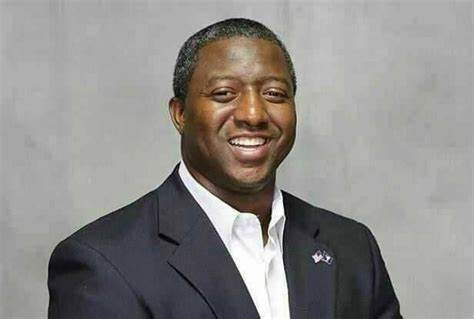
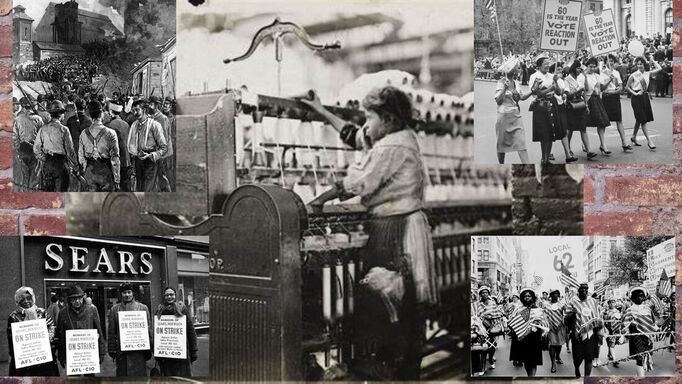
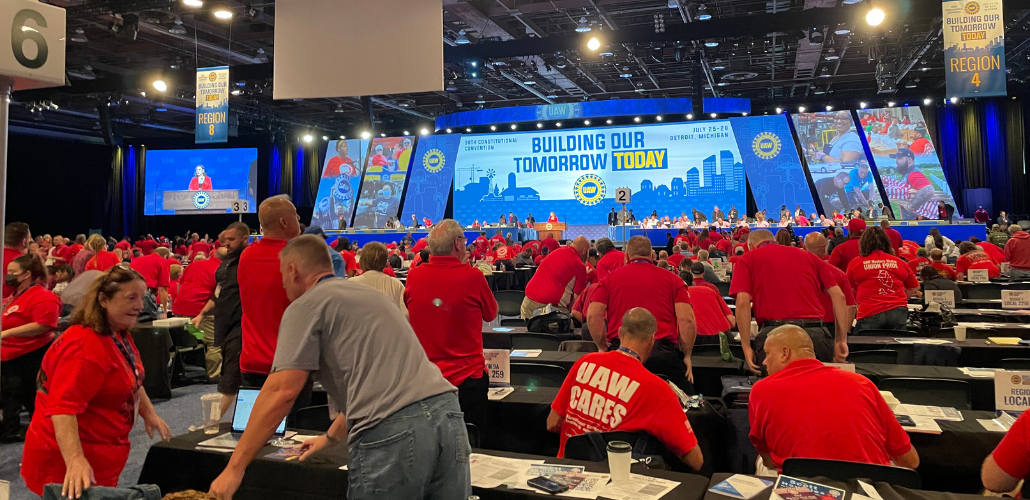
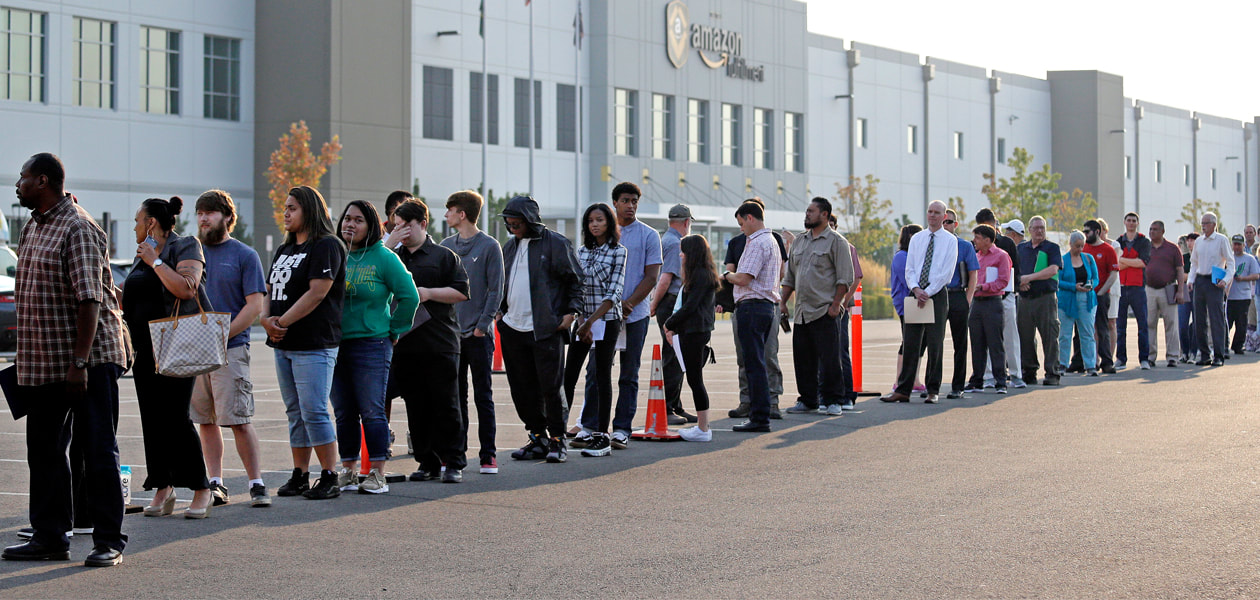
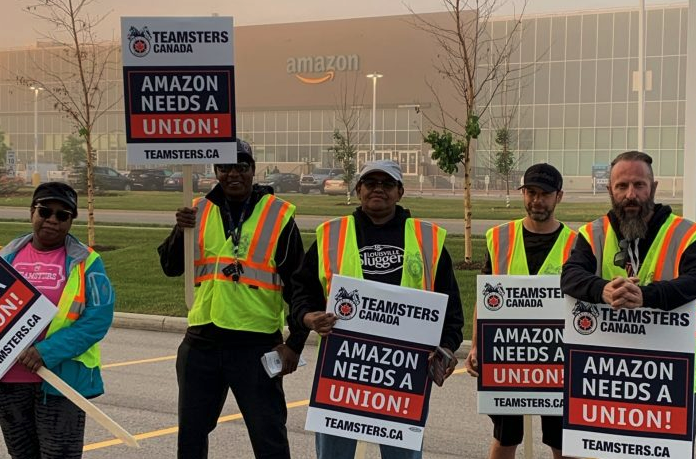
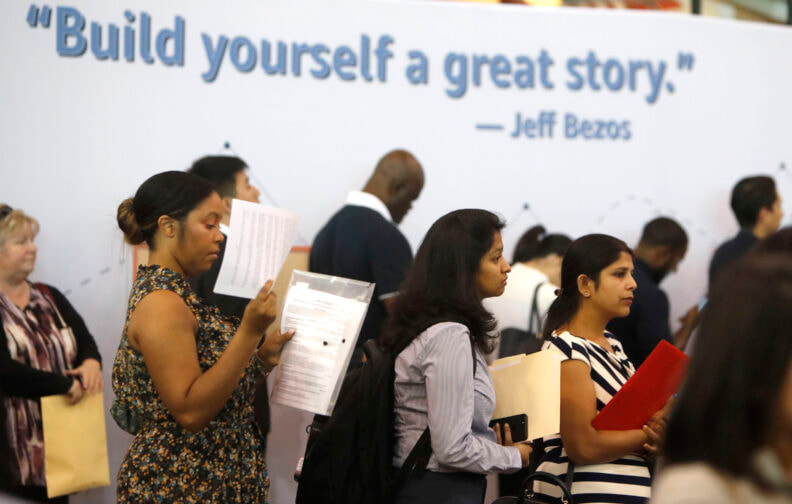
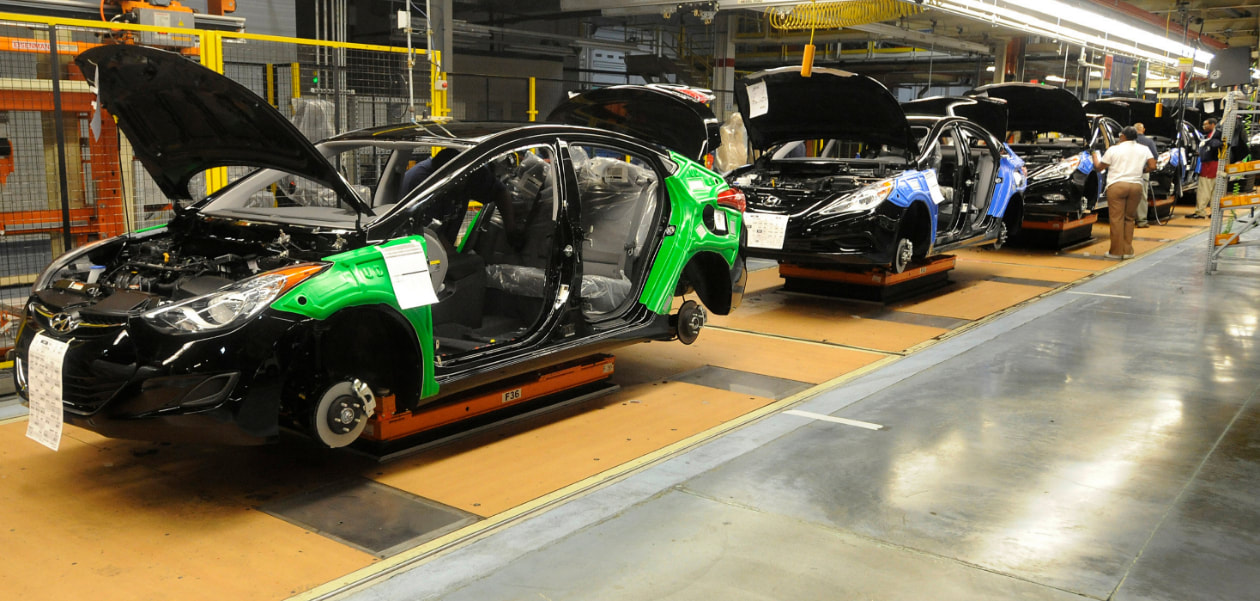
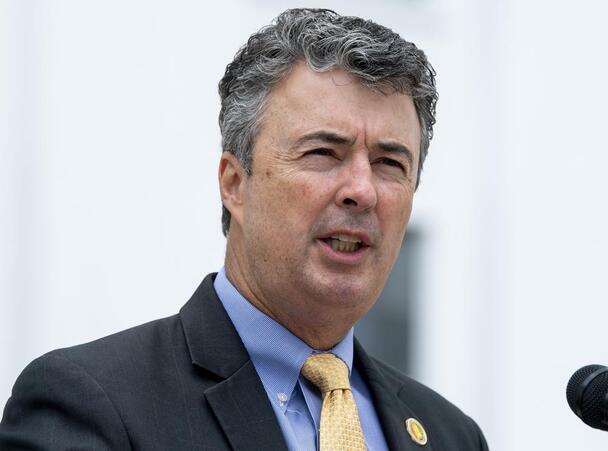
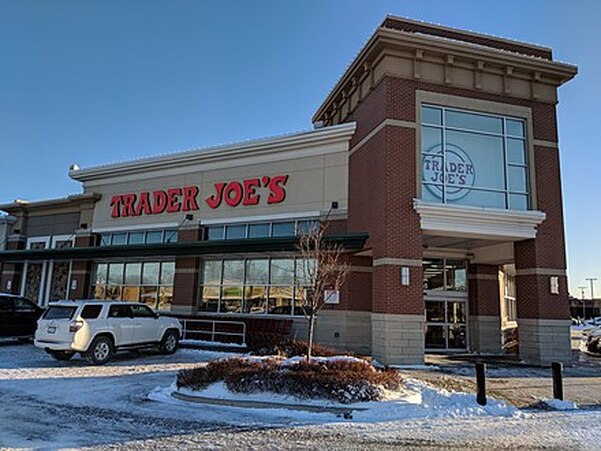
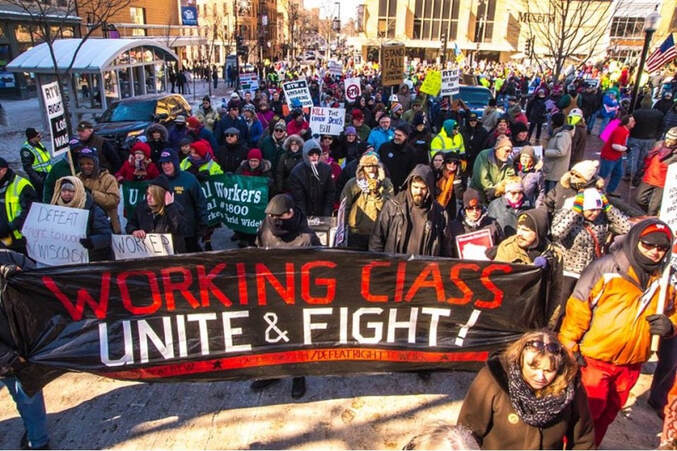
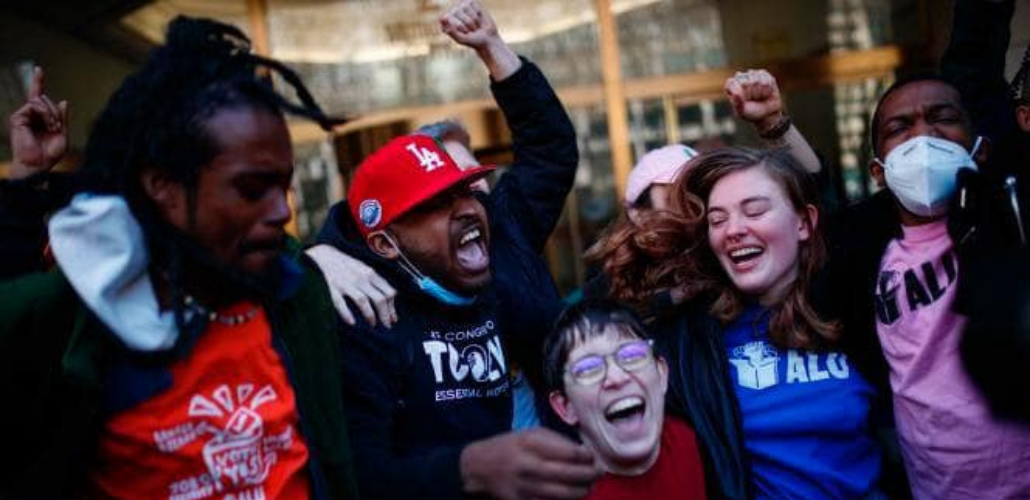

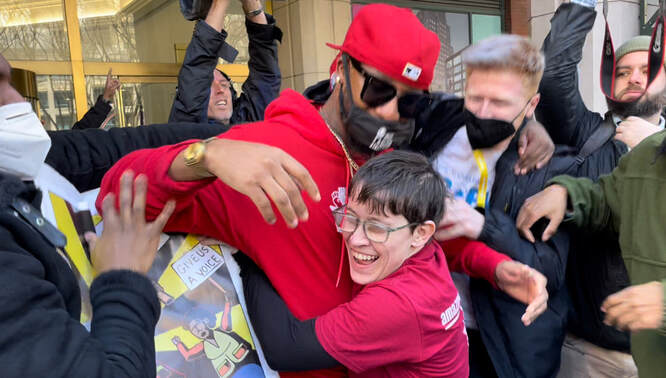
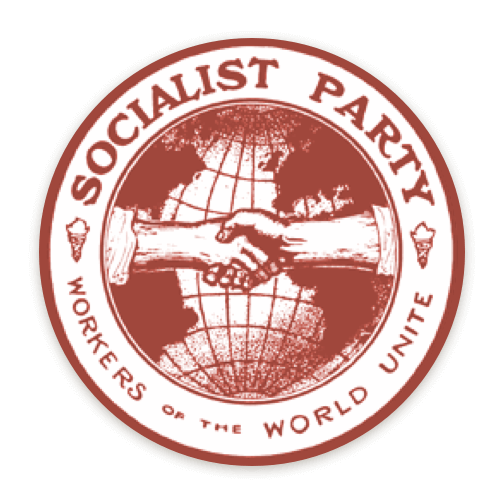
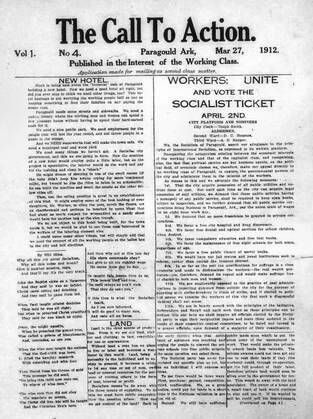
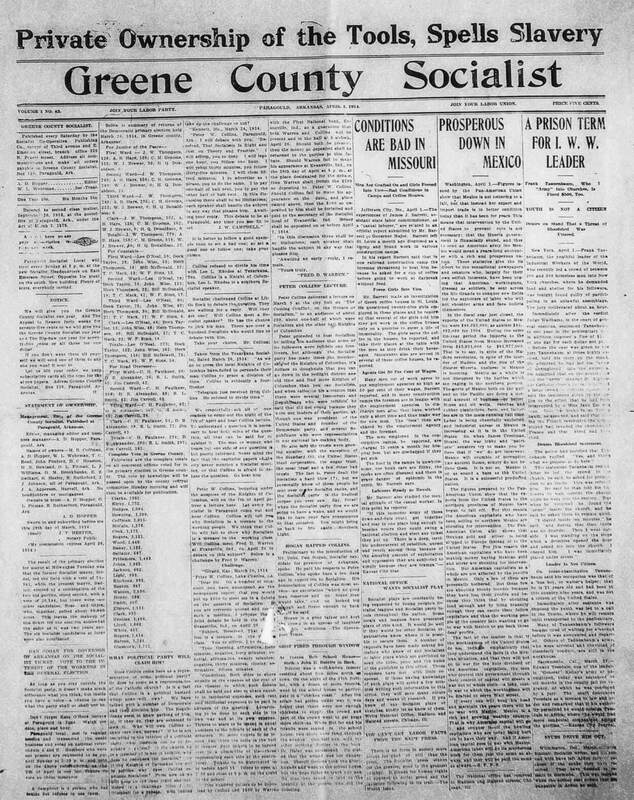
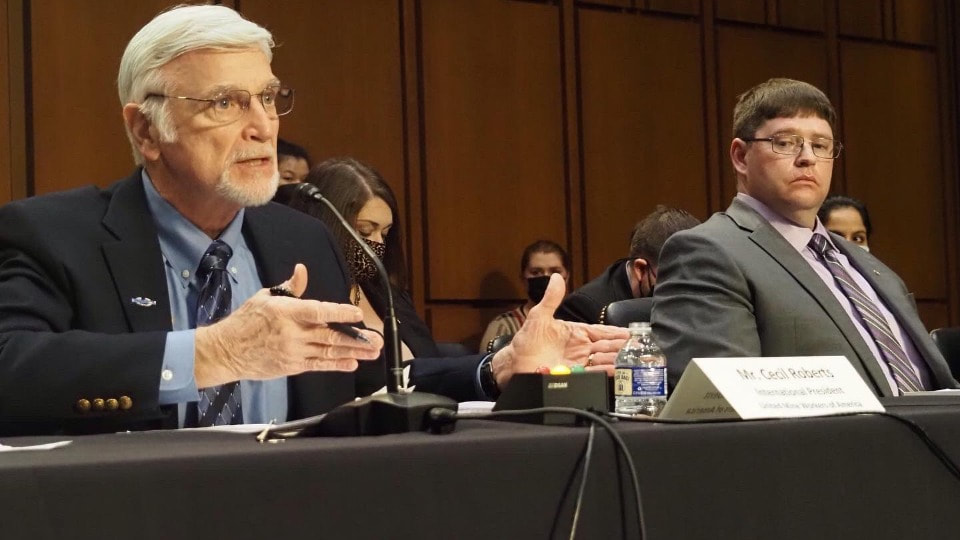
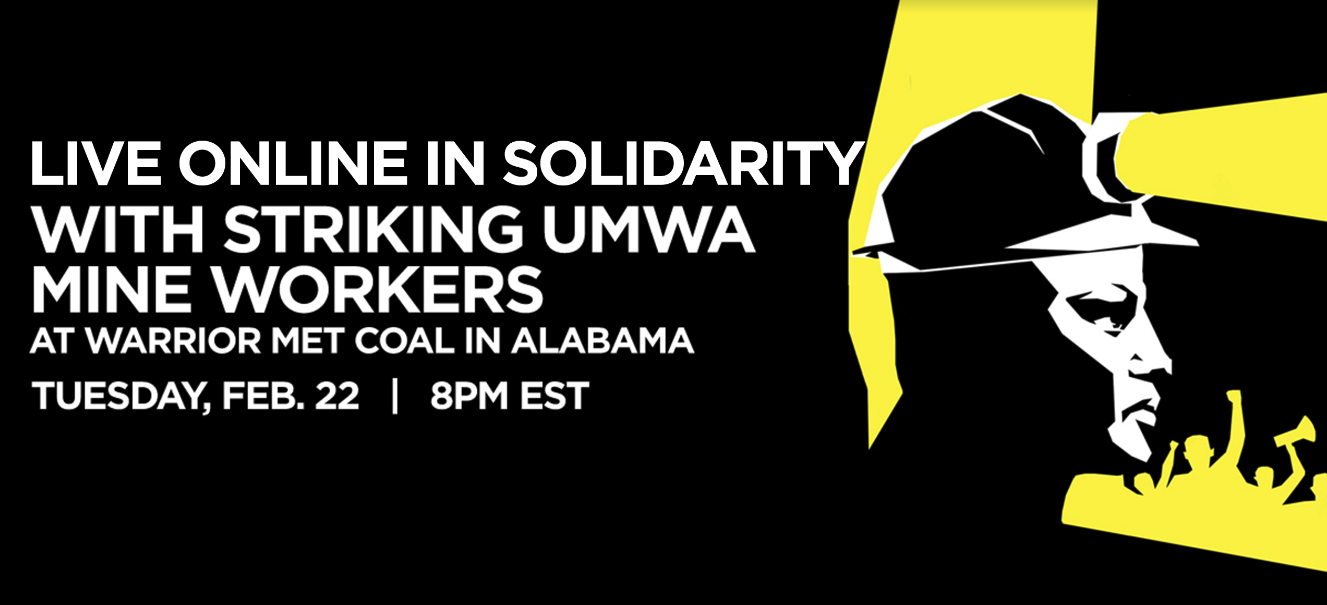
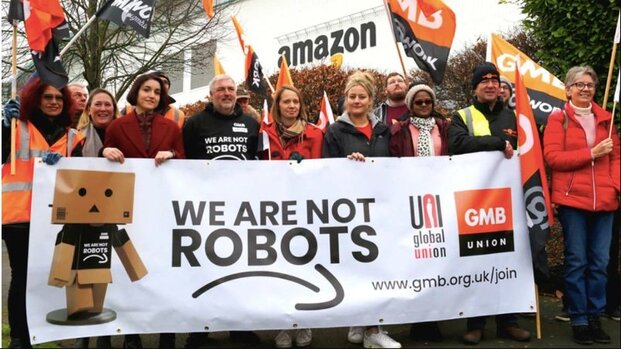
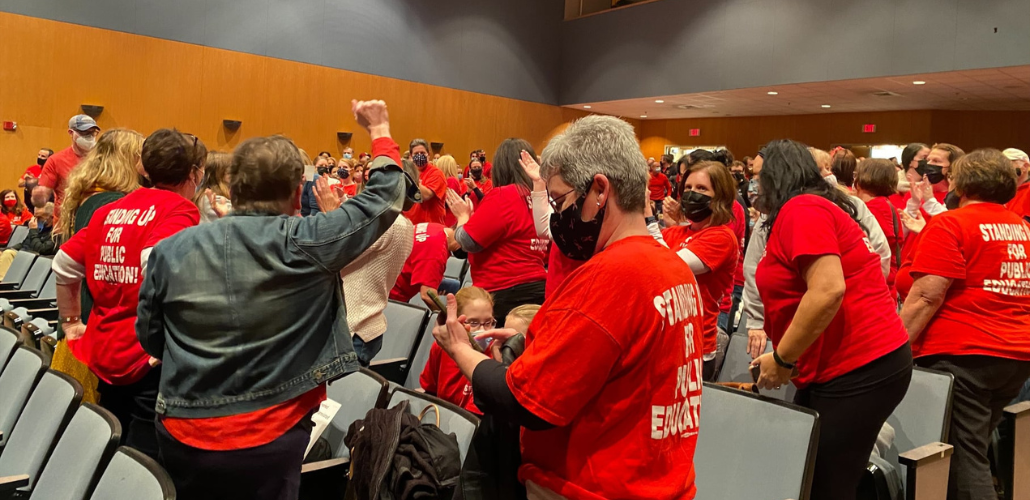
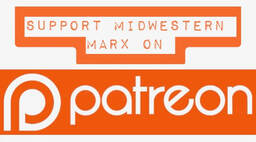
 RSS Feed
RSS Feed